Few scenes feel as quintessentially British as a country garden in summer, where deep borders spill with flourishing annuals and perennials, rose gardens bloom and tree canopies bow beneath the weight of fresh green leaves. Autumn and winter are equally magical, when shapes, textures and colours fill the landscape, bringing much-needed natural beauty in the depths of the darkest months of the year. And after winter’s short, dank and drear days, the rush of green growth heralded by spring and the accompanying buzz of wildlife suddenly spurred into action is incomparable.
There are many great gardens in the UK, each with its own special character. Here, we reveal some of our favourites, from world-famous Kew in London and the Lost Gardens of Heligan in Cornwall, to the lesser-known Dyffryn Fernant Garden in Wales, the exuberant Crathes Castle Garden in Scotland, and the joyous Great Dixter in East Sussex.
22 spectacular National Trust walks
From Kent, Dorset and the Lake District in England to the Highlands of Scotland and the mountains of Snowdonia in Wales, here is BBC Countryfile Magazine's pick of the best National Trust walks in the UK.

Britain's best country gardens to visit
England
Lost Gardens of Heligan, Cornwall
Heligan manor house was first built in the 1200s as a home to the Tremayne family. The estate was developed from 1766, when the walls of the flower garden were built, to 1907, when the Italian garden was put in place. However, throughout the early 20th century, bramble and ivy covered the thousand acres and after decades of neglect the gardens were almost completely concealed.
These once-derelict gardens were discovered in 1990 by Tim Smit and John Willis, who were inspired by a motto carved into a limestone wall, which still reads “Don’t come here to sleep or slumber” with the workers names signed underneath and the date – August 1914.
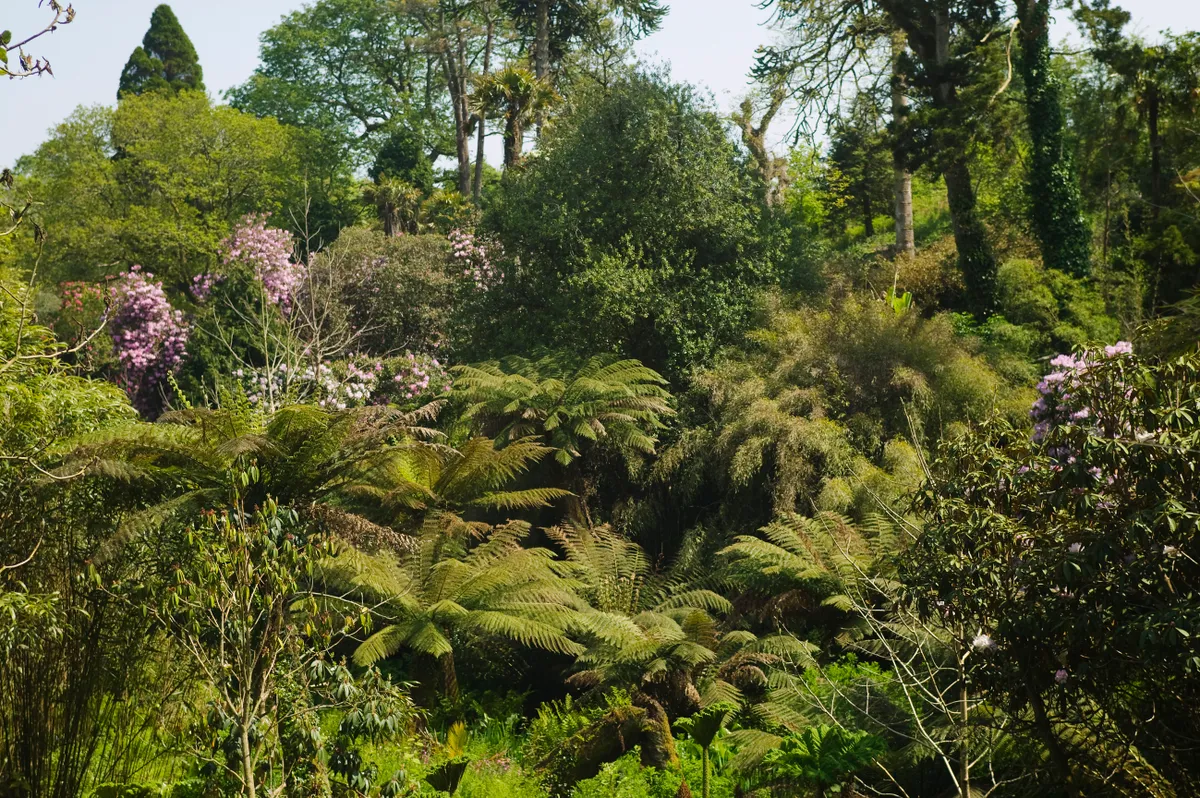
By 1991, planning permission was given to open to the public. Since then, work on the grounds has continued through an established team at Heligan and the garden has received numerous awards for restoration.
Anglesey Abbey Gardens, Cambridgeshire
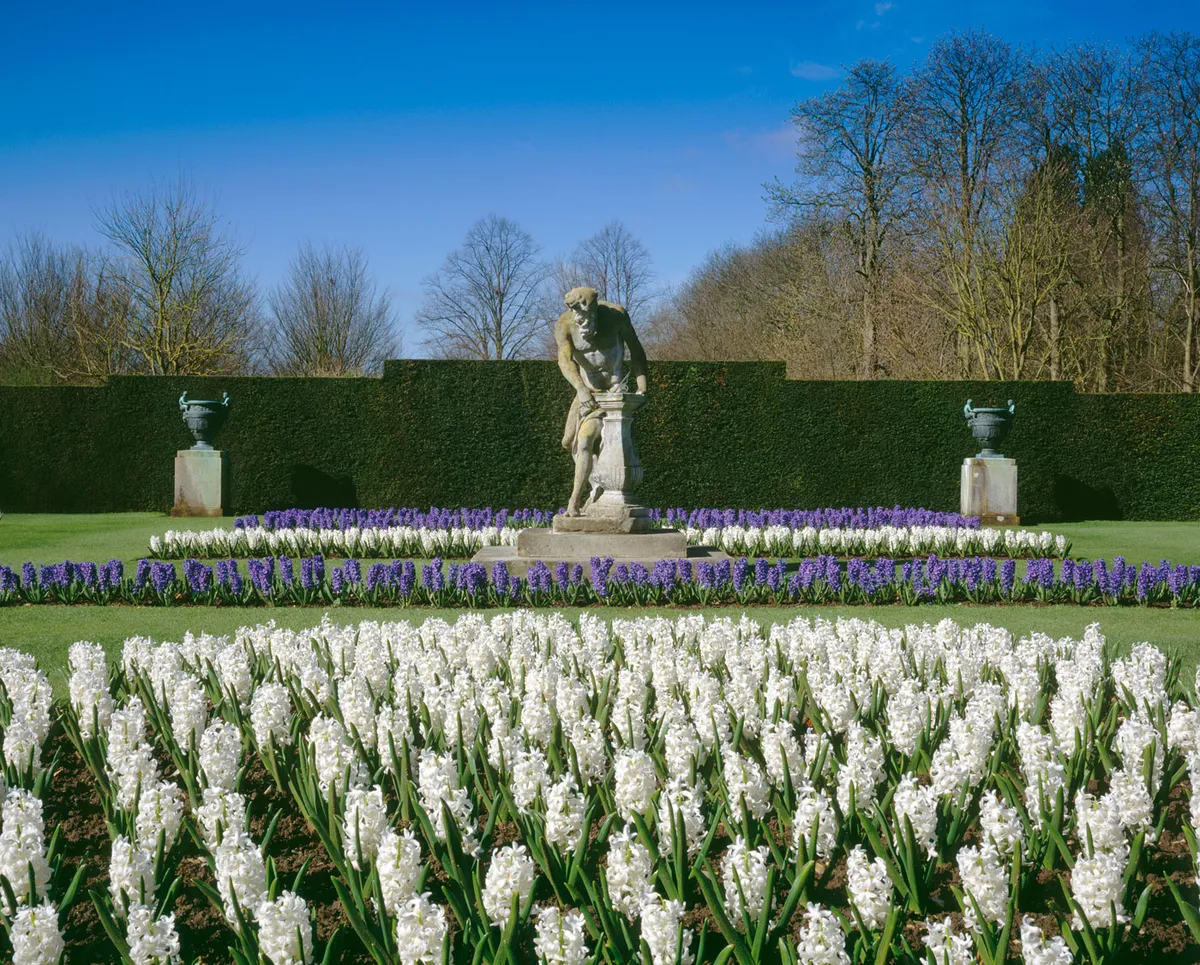
This seasonal garden has something spectacular all year round. Dahlias provide a dramatic burst of late summer colour right up until the first frosts. Carpets of cyclamen and rich autumnal colours breakout throughout the gardens. Walk across the lawns and feel the crunching fallen leaves beneath your feet, and take in the colours of the beautiful autumn coloured trees above you.
nationaltrust.org.uk/anglesey-abbey-gardens-and-lode-mill
Sheffield Park, Sussex

Four lakes form the heart of this 18th century garden and 265-acre park garden, with paths through glades and wooded areas. It is a must see for seasonal colour from the rare trees and shrubs: there are 25 species of acers alone, with leaf colours ranging from lime green to bright red, plus Gingko biloba (Maidenhair tree) which goes a brilliant amber, and the tupelo tree, deliberately planted for its spectacular autumn display. The trees’ dramatic reflections in the lakes add to the splendour.
nationaltrust.org.uk/sheffield-park-and-garden
Killerton House, Exeter, Devon
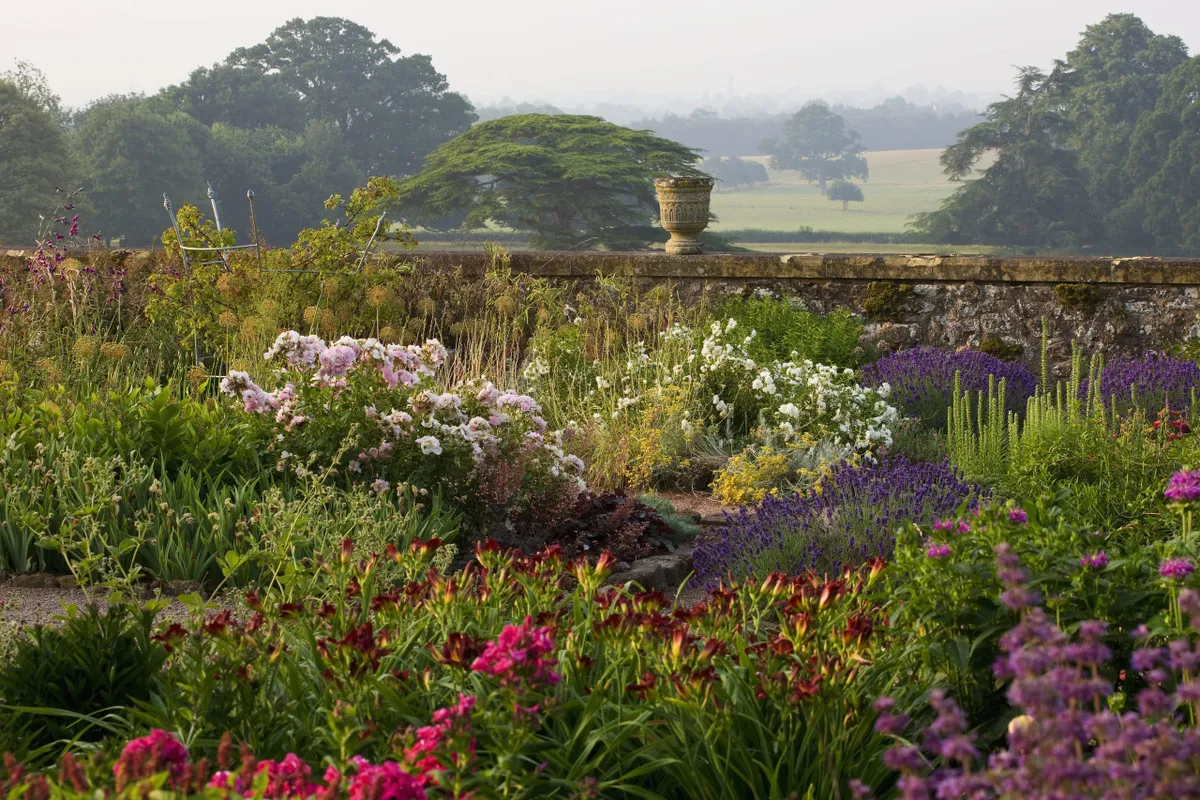
Killerton is a working agricultural estate guided by the seasons, with its foliage following too. Here is a beautiful place to see the autumn colours come into light. Orchards are a feature of the estate, and in autumn the public are invited to help pick the many varieties of apple. These are pressed using a traditional cider press and each year there is an apple and cider festival. Everyone can enjoy Killerton's parkland views by hiring in advance a tramper (an electric all-terrain mobility scooter for cover rough ground ).
nationaltrust.org.uk/killerton
Cotehele, Cornwall
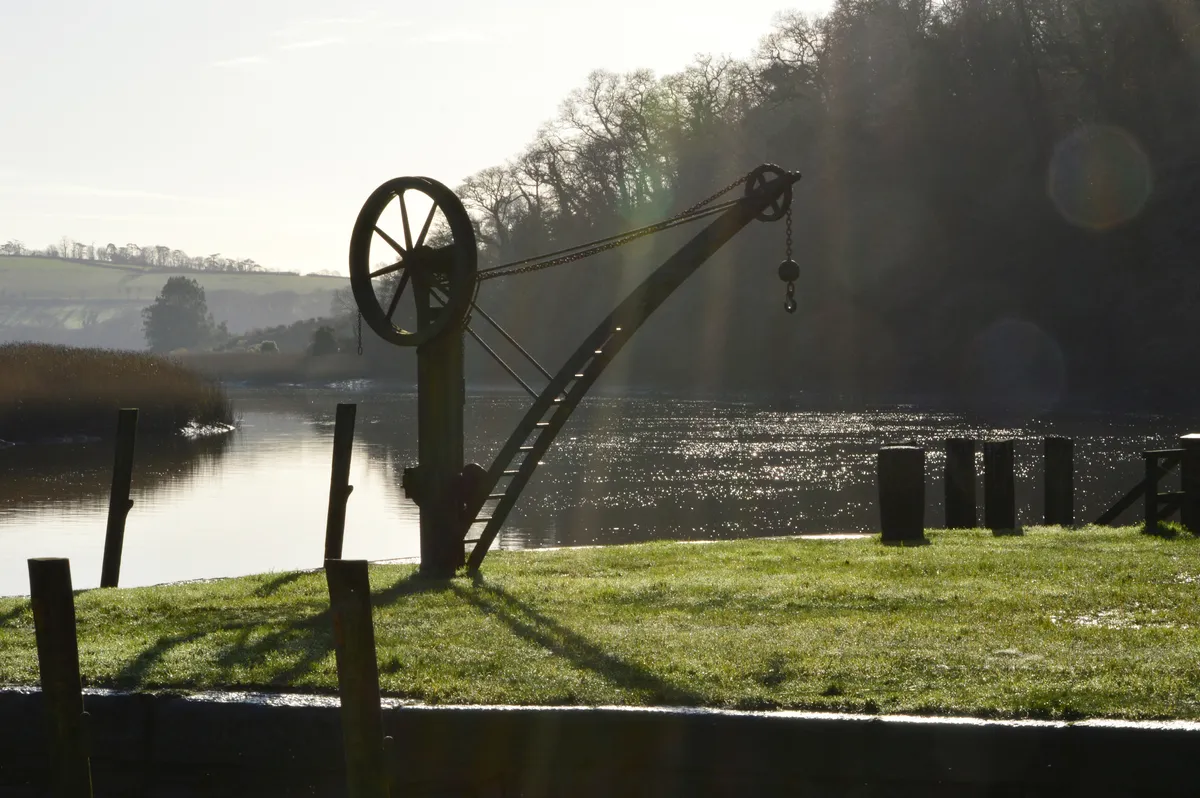
Cotehele garden is based around a Tudor house with superb collections, and there is also a historic riverside quay, historic orchard and estate to explore. Every season promises a colourful view to the river Tamar and beyond. In autumn, the Upper Garden shows off ash and dogwoods in their finest seasonal hues while the Valley garden has colourful acers and purple beech. Each year Cotehele gardeners build a 100-foot Christmas garland from thousands of flowers grown on the estate – you can see it being constructed during November.
Belvoir Castle, Leicestershire
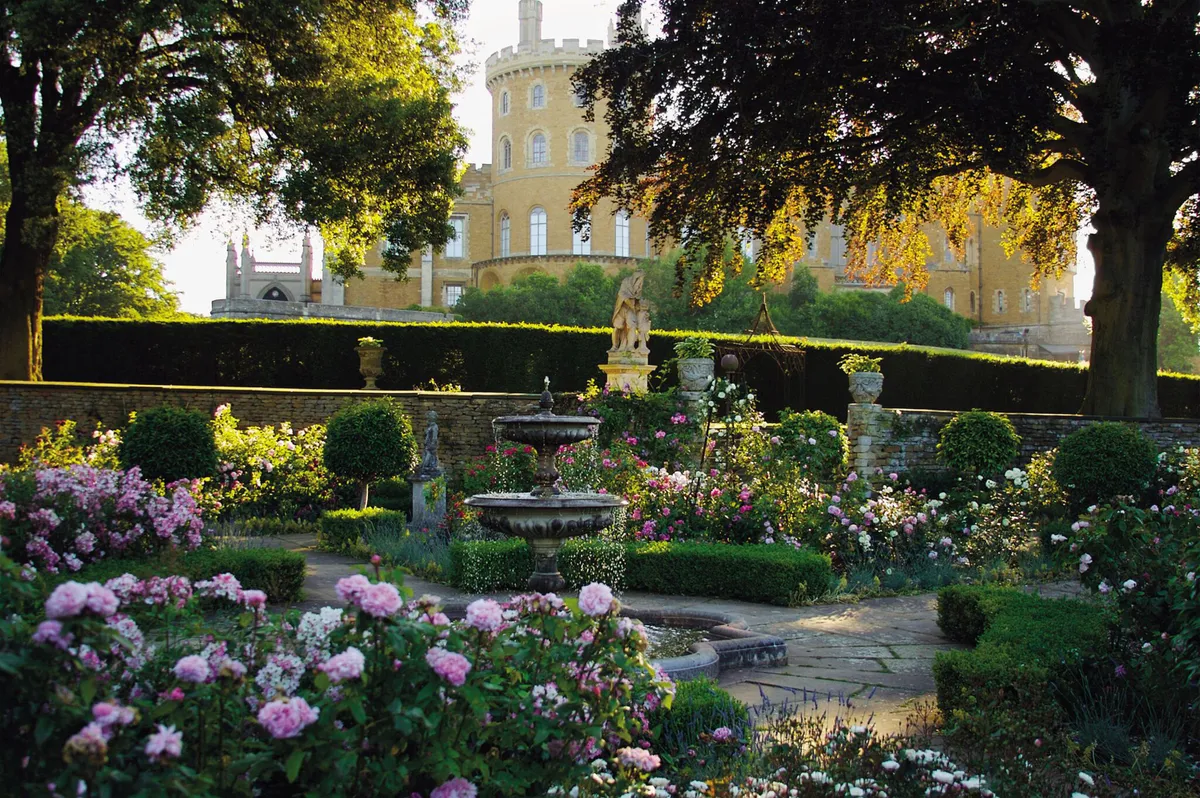
The ancestral home of the Dukes of Rutland, the Castle’s formal gardens are studded with classical statues and scattered with water features. The Duchess’ Spring Garden is fed by underground springs so that plants bloom all year round and the lush woodland is home to many species of beautiful trees.
Cholmondeley Castle, Cheshire

The Cholomondley family have lived on these lands since the Norman times, with the castle built in the early 19thcentury by the first Marquess. Nestled within historic parkland the 70-acre garden features a romantic Temple, Water Gardens Arboretum and the newly created Lavinia Walk, a 100m long double herbaceous border.
Forde Abbey, Dorset
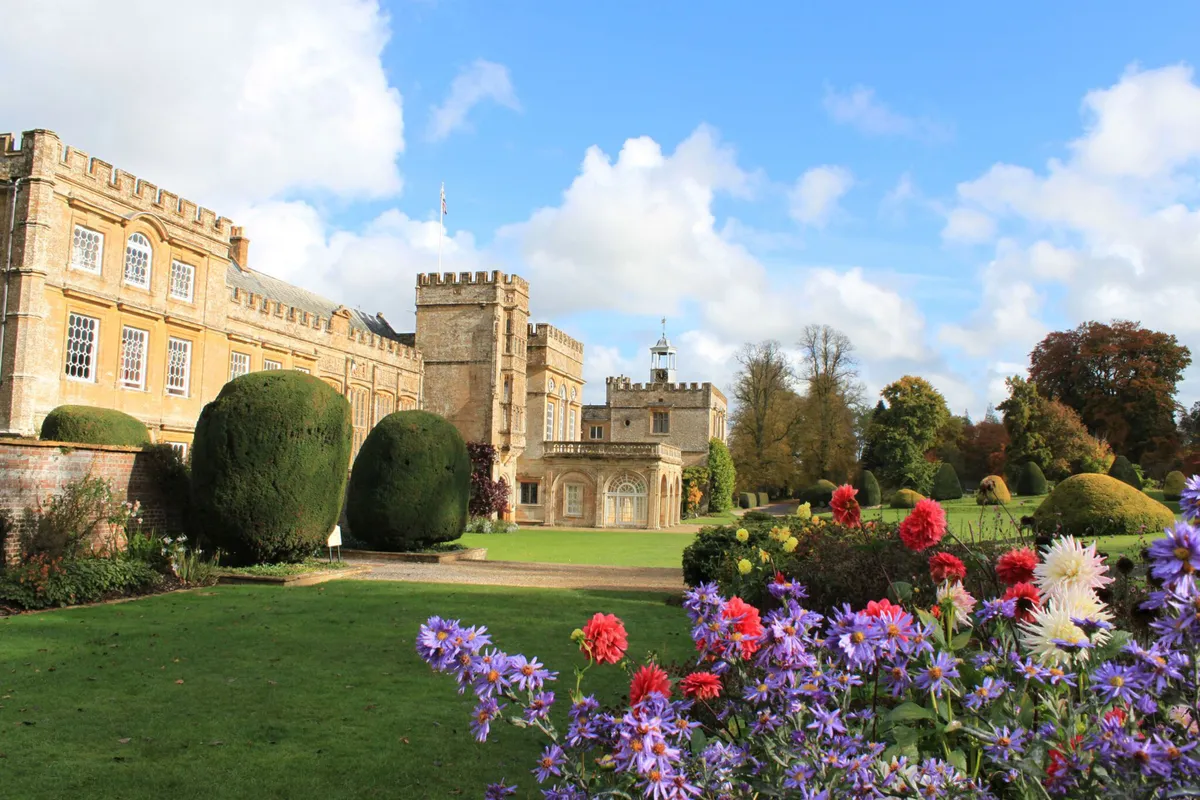
A former Cistercian monastery, the gardens of Forde Abbey are home to the highest-powered fountain in the country. They include topiary-lined vistas, colourful herbaceous borders, an arboretum, a bog garden, which together with swathes of early spring bulbs and camellias provide all-year-round interest.
Kiftsgate Court, Gloucestershire
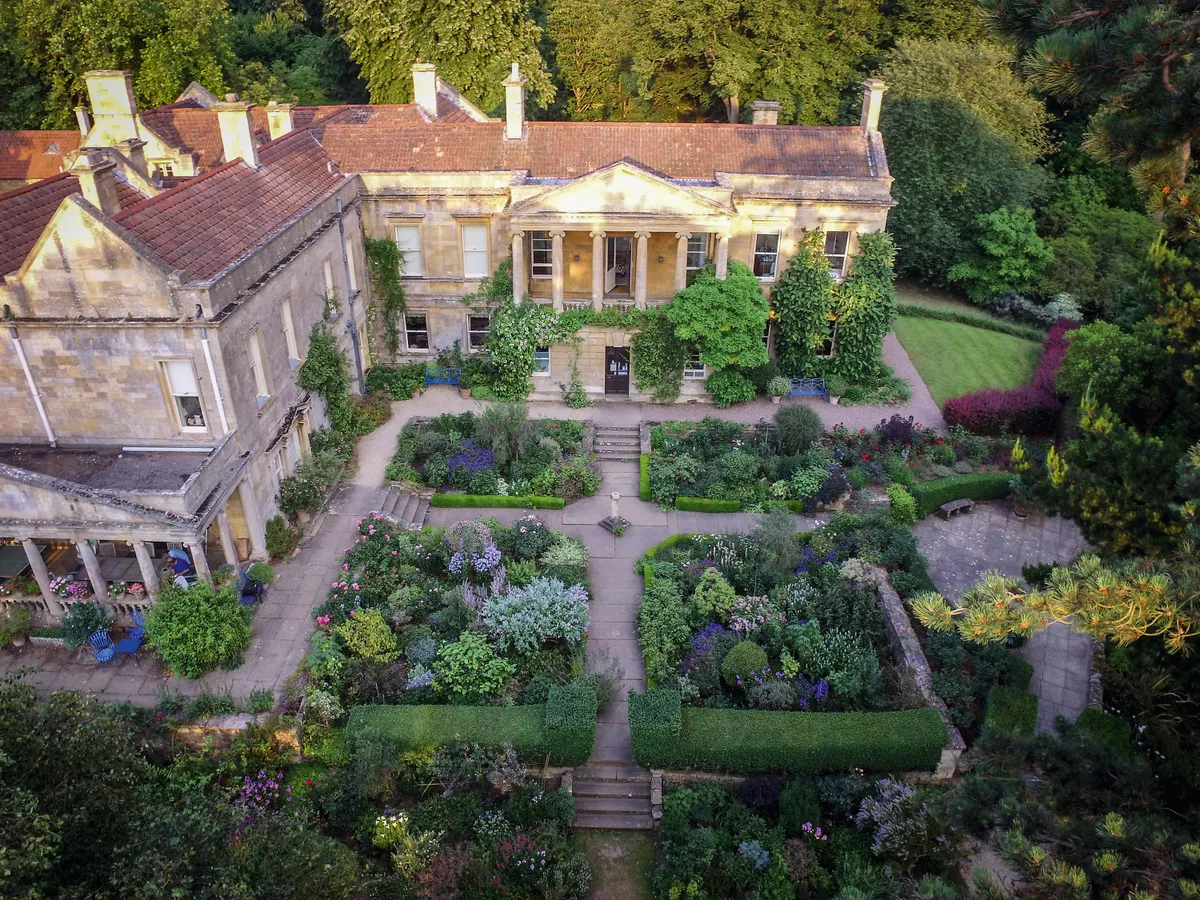
The Kiftsgate Court gardens are the creation of three generations of women gardeners since the start of the twentieth century and contain a sunk garden, rose border and bluebell wood.
Newby Hall, North Yorkshire
Designed by Christopher Wren and built between 1691 and 1695, Newby Hall is home to the Compton Family. Its gardens feature a lush herbaceous border, tropical garden and national cornus collection.
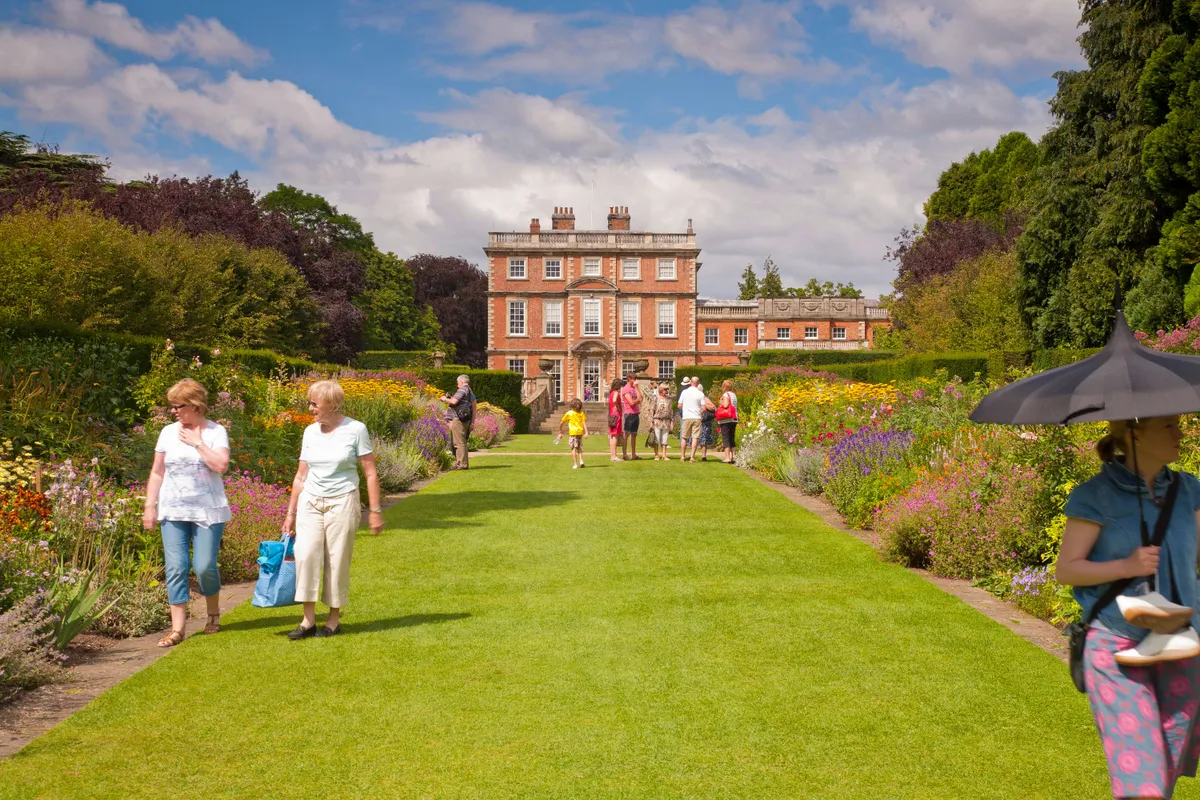
Kew Gardens, London
Perhaps the UK's best-known gardens, Kew offers visitors a bit of everything, from its 500 acres of woodland and the world's largest seed conservation project, to its wild botanic garden and tree-top walkway.
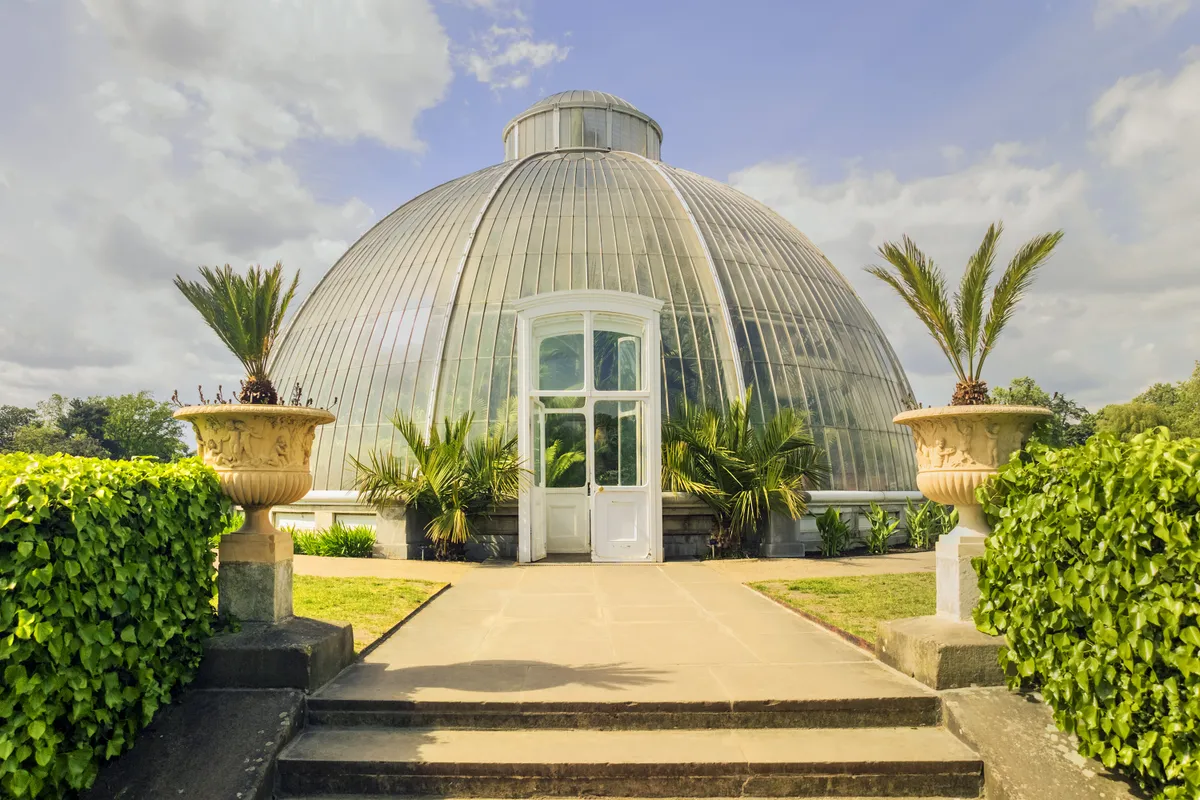
There are more than 50,000 living plants at Kew, so it's worth spending the whole day there if you don't want to miss out on seeing them all!
Best glasshouses to visit in the UK
Sample tropical floral delights from around the globe with a day out to one of the UK's best glasshouses, greenhouses and biomes.
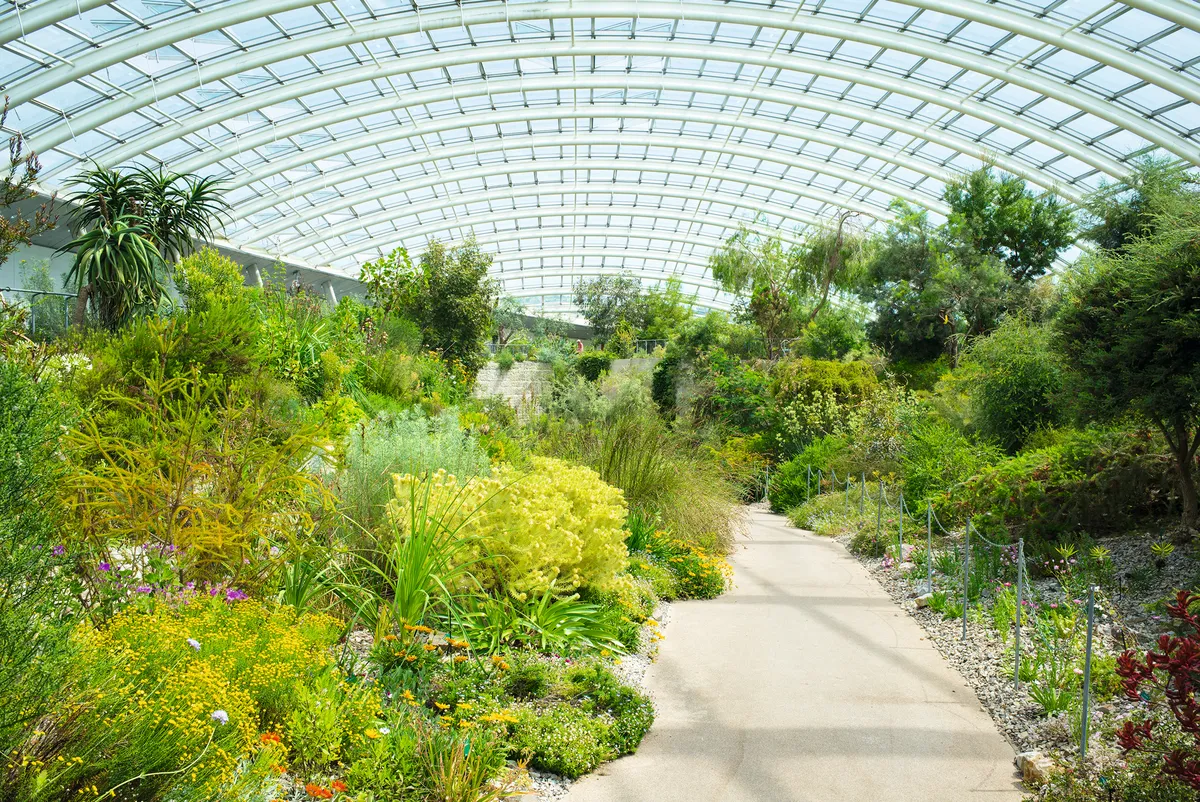
Wisley Gardens, Surrey
One of Wisley's highlights is its splendid glasshouse. There are three climatic zones to explore in the 12-metre-high structure: tropical, moist temperate and dry temperate. The steamy tropical area is filled with bananas, bromeliads and climbers. In the moist temperate zone you’ll find giant ferns and epiphytes, while in the dry zone, desert cacti thrive.
Great Dixter, East Sussex
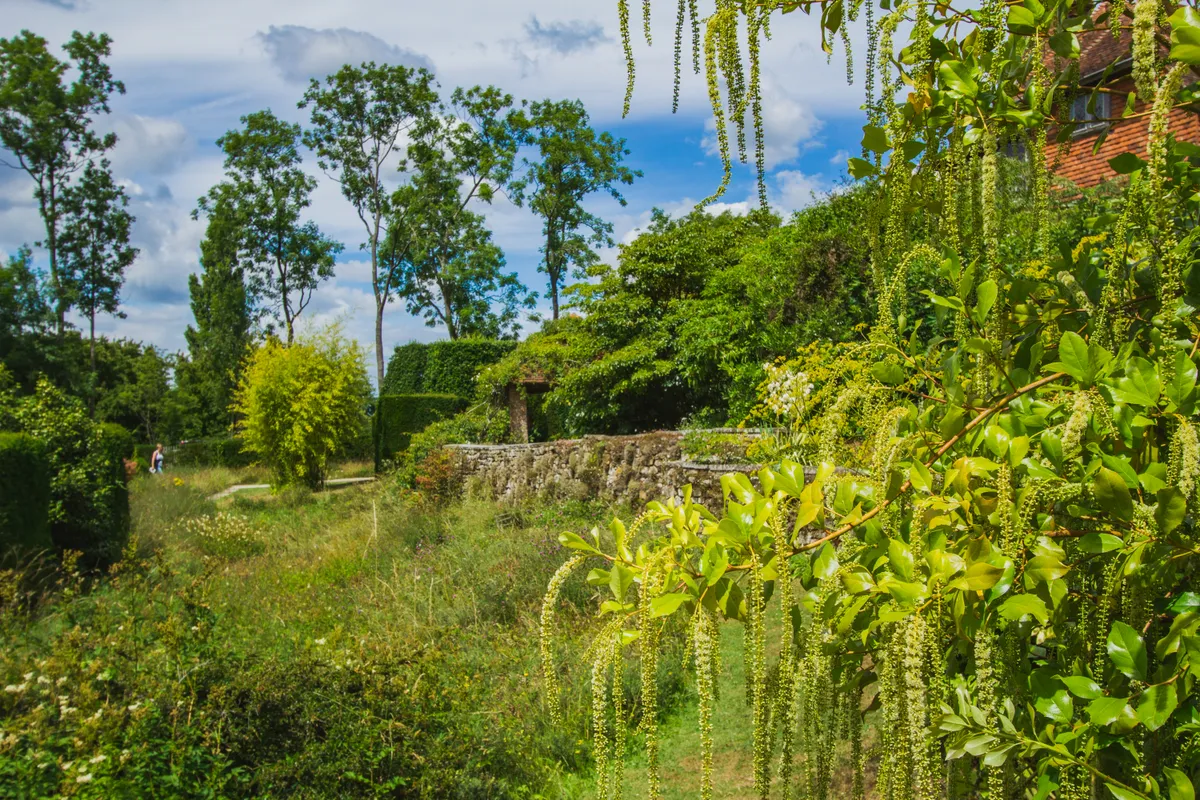
There are few better days out in East Sussex than a visit to Great Dixter, a garden once owned by the late, great plantsman Christopher Lloyd and now looked after by head gardener Fergus Garrett and the Great Dixter Charitable Trust. Its fabulous borders are exciting at any time of year due to clever succession planting giving ever-changing displays. The garden is divided into ‘rooms’, with each area having its own distinct character.
Dunham Massey, Cheshire
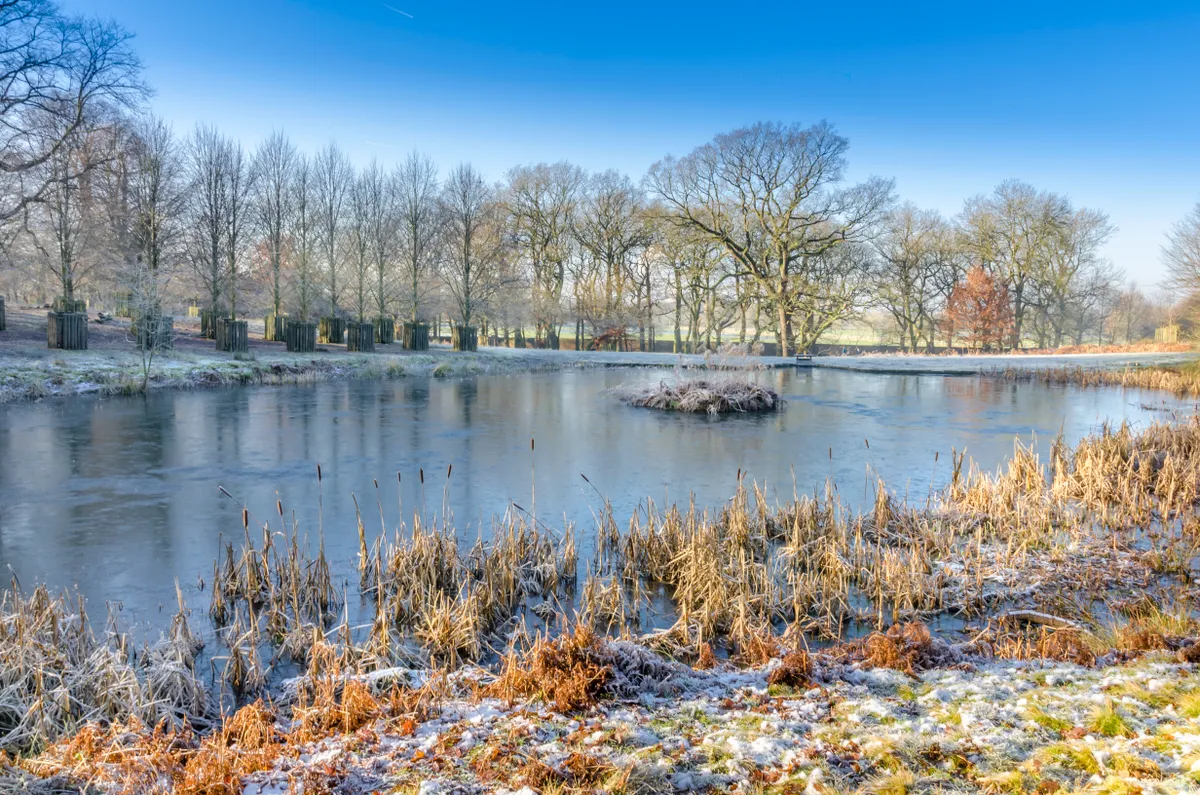
Britain’s largest winter garden – Dunham Massey – is in Altrincham, just a stone’s throw from Manchester. Many of the trees in the surrounding parkland were planted in the 1730s by the Earl of Warrington: they were paid for with the dowry of the unfortunate wealthy merchant’s daughter who he married for her money. The Earl may have been a bounder but his trees look pretty amazing. The 300 acres of parkland boast a range of architectural oddities, fallow deer and fabulous walks.
Anglesey Abbey, Cambridgeshire
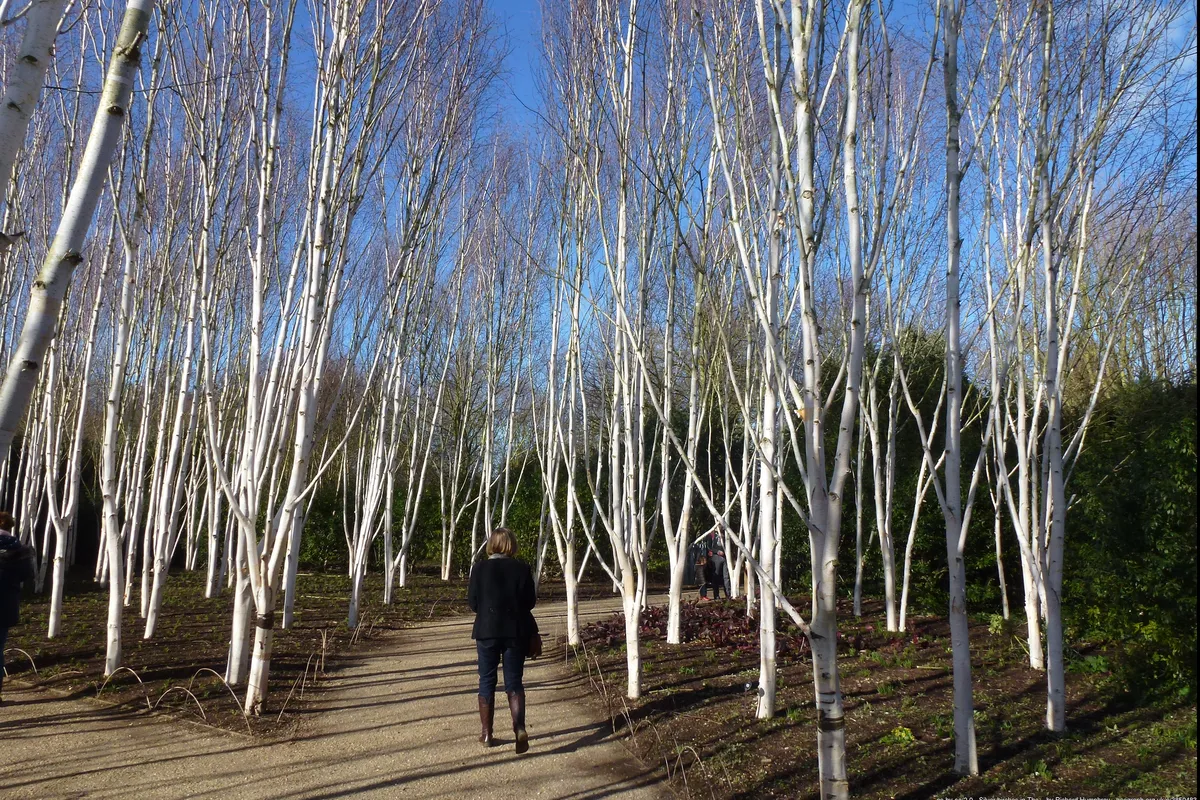
Anglesey Abbey has one of the finest winter gardens in the country. Loads of exciting plants full of texture and scent set alongside a generously proportioned pathway. Go right to the end of the path as there is a deeply wonderful surprise waiting for you. Perfect for a gentle winter amble.
Stowe, Buckinghamshire

Walking boots on – there is a lot of landscape to see here at Stowe House. There’s nothing that you would easily describe as a garden but lots of cleverly landscaped valleys studded with some of the finest garden buildings ever made: “Elysian fields? Certainly, sir, right down there by the Temple of Ancient Virtue.” The gardens were laid out by such eminences as Capability Brown, William Kent, Charles Bridgman and John Vanbrugh and are not only majestic but also tell a great story.
Stourhead, Wiltshire
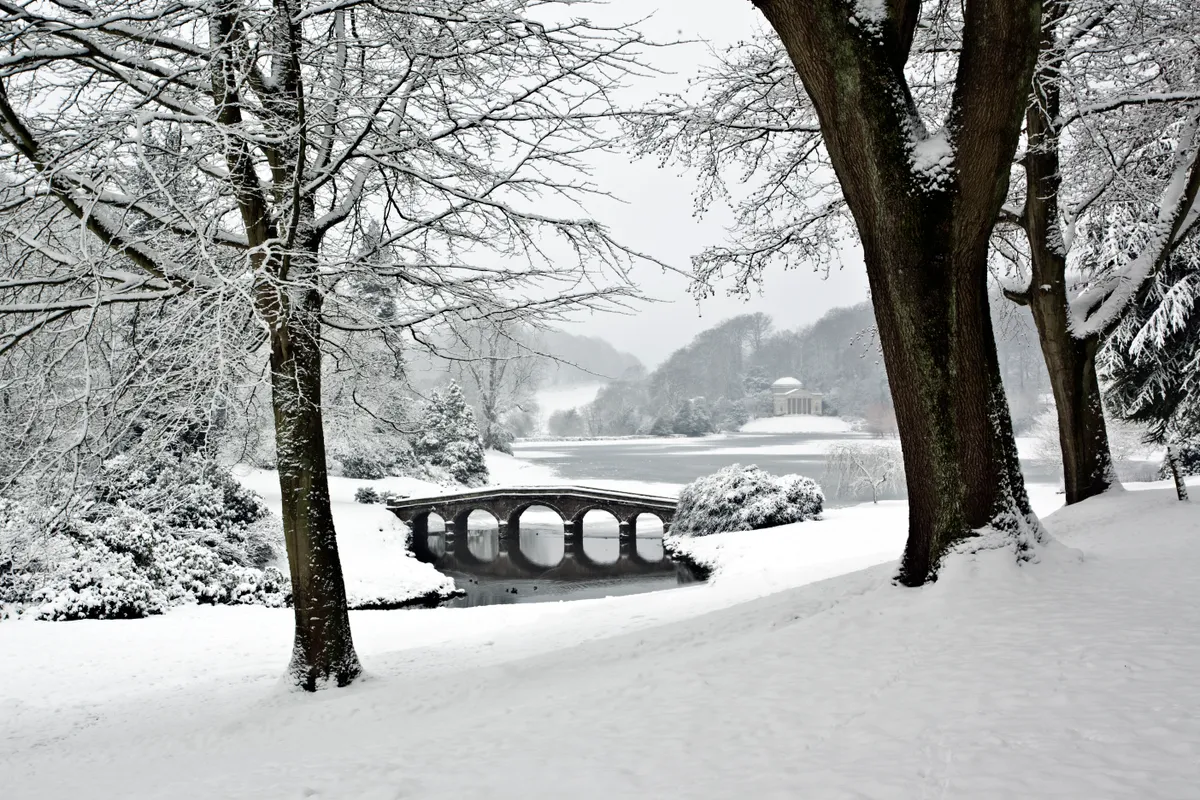
The large Stourhead estate is home to a spectacular landscape garden, which contains a number of interesting temple-style buildings and a man-made lake. The garden was designed by owner Henry Hoare II in the 1740’s and since then has been altered and added to by subsequent landlords, most notably Sir Richard Colt Hoare who introduced rhododendrons and pelargoniums. The striking features of this garden have caught the eye of many a film crew in recent history, and can be glimpsed in both the 2005 adaptation of Pride & Prejudice and Stanley Kubrick’s 1975 feature Barry Lyndon.
If the day promises to be sunny and frosty then an early morning visit is recommended in order to see the estate in its true winter glory.
Mottisfont Winter Garden, Hampshire

The village of Mottisfont is home to the magnificent Mottisfont Abbey and it’s surrounding gardens. Since the estate housed an Augustinian priory in the 13th century, the gardens have been a key feature of the property, and were shaped by Georgian landowners into the charming pleasure grounds that they are today.
As winter looms, the garden becomes a haven of late-flowering shrubs and sweet-smelling winter honeysuckle.
Flatford Wildlife Garden, Suffolk

A lovely garden brimming with wildlife, Flatford Wildlife Garden offers a number of interesting autumnal activities that you can get involved with before the frost kicks in. The head gardener will be on hand for a chat on how to extend the flowering season in your garden, or you can explore the wide variety of toadstools growing in the grounds.
Once winter truly begins, Flatford is still worth a visit if you are a keen birdwatcher, as flocks of long-tailed tits and siskins can be found in the trees.
Belsay Hall Gardens, Northumberland

Since the 13th century, Belsay Hall has been owned by just one family, the Middleton’s, several of whom were gardening enthusiasts. As a result, Belsay is home to several beautiful formal gardens, including the Winter Garden.
As temperatures drop winter plants begin to flourish in the gardens. These include:
- Flowering Christmas box (Sarcococca confuse)
- Pink and red rhododendrons
- Yellow-berried hollies and cloud shaped box
Additionally, three varieties of snowdrop can also be seen. These are: the common snowdrop (Galanthus nivalis) and the double flowered species of Galanthus nivalis 'Flore Pleno' can be seen. The taller Galanthus 'Sam Arnott' can be found in the Winter Garden.
Brodsworth Hall Gardens, near Doncaster
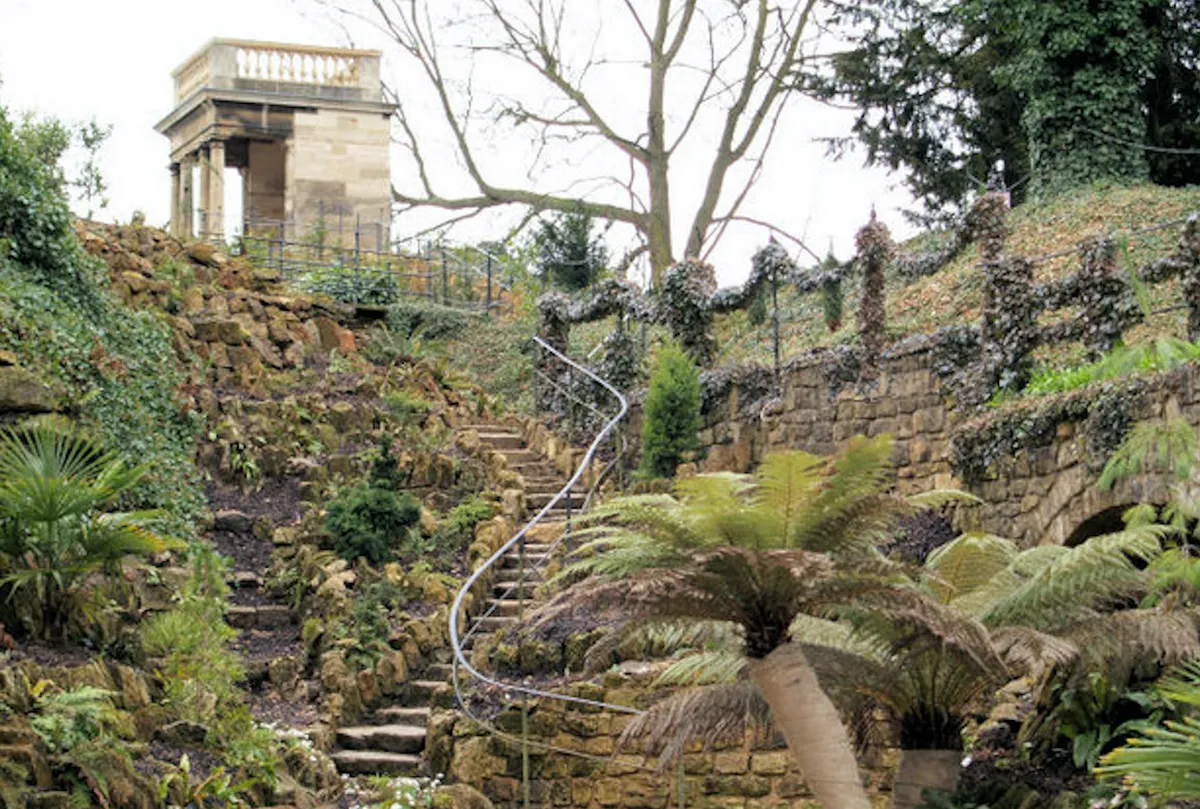
Built in the 1860’s and occupied by the Thellusson family for over 120 years, Brodsworth Hall is a grand and dramatic manor which boasts equally impressive gardens. As the family occupied the house all year round, the gardens were designed in a way that would make them interesting throughout the four seasons.
In winter lush evergreens can be seen in the formal garden alongside holly berries, while in the Flower Garden the late-planted spring bedding provides a splash of colour. When January arrives so do snowdrops, aconites and coum, dotting the woodland with lovely little patches of white, yellow and magenta.
Audley End Garden, Essex

Adapted from medieval Benedictine monastery Walden Abbey in the 16th century, Audley End is a house of enormous proportions with a garden to match. Designed by the two famous 18th Century landscapers Richard Woods and Lancelot 'Capability' Brown, this is a sumptuous garden which offers plenty to see and do during the winter.
A trail of snowdrops planted in 2004 twist through the scenery, while winter aconites can be seen, along with hellebores and a variety of oriental and London plane trees that can be identified by their distinctive grey and cream mottled markings. Large mature evergreen trees can also be seen looming over everything, and in January potted strawberry plants can be spied starting to grow in the Vinery.
Witley Court and Gardens, Worcestershire

In 1937 a fire ravaged both the house and gardens at Witley Court, and although it has now been over sixty years since the incident restoration is still ongoing. Yet despite this Witley Court has a lot to offer, especially the brand new East Parterre garden and a Woodland Walks section of forest which includes species of tree and shrub from all over the world.
Additionally, an area named ‘The Ornamental Walks’ is planted with numerous large trees, mostly North American conifers densely under planted with rhododendrons and other evergreens. Other highlights include winter flowering shrubs, snowdrops and a section of evergreen topiary.
As for wildlife, the many pools at Witley attract a variety of birds including coots, moorhens, grebes, swans and kingfishers, and Witley Court itself is used as a roost by various species of bat such as Pipistrelle and Brown Long-Eared.
Coleton Fishacre, Devon
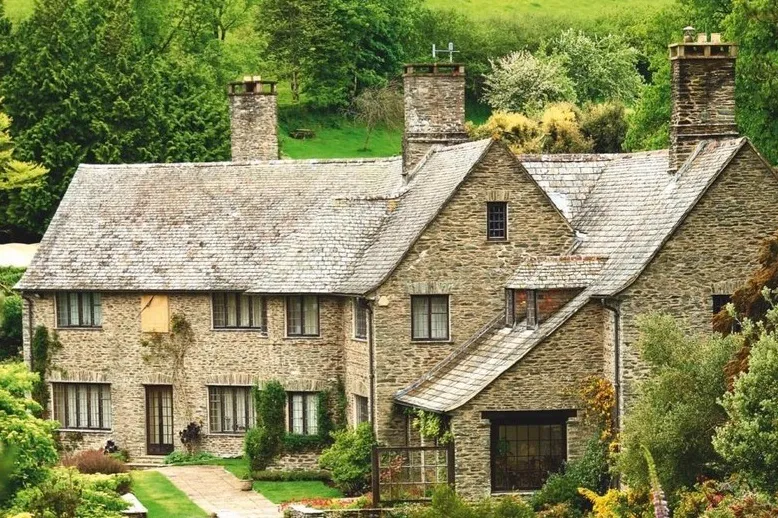
After an invigorating hike along South Devon’s coastal path, drop down a gear or two and explore the terraced gardens of Coleton Fishacre, a colourful mix of rare, exotic and tender plants that cascade from the house to beautiful Pudcombe Cove.
Pick a route along the many paths that thread through the trees and shrubs of this stylish 1920s Arts and Crafts house, teased by pretty ocean views. A dreamy mix of pastel shades fringes the stream that dances down the combe, and buzzards mew overhead. On a hot June day, end your visit with a cooling drink at the delightful café.

Parcevall Hall Gardens, North Yorkshire

The bountiful terraces, sweeping views and mossy woodlands of Parcevall’s hillside gardens rejoice in spring and summer with vibrant colours, floral fragrances and stirring birdsong.
Pensthorpe Gardens, Norfolk

Set amid the flat farmland of the North Norfolk countryside is Pensthorpe Natural Park, home to one of Britain’s most radiant summer gardens.
How to grow your own cut flowers
Would you like gorgeous fresh cut flowers all summer? All you need is a handful of seed, a spare patch of soil, and five minutes a day. Our guide on how to grow your own cut flowers and fill your home with fresh blooms.
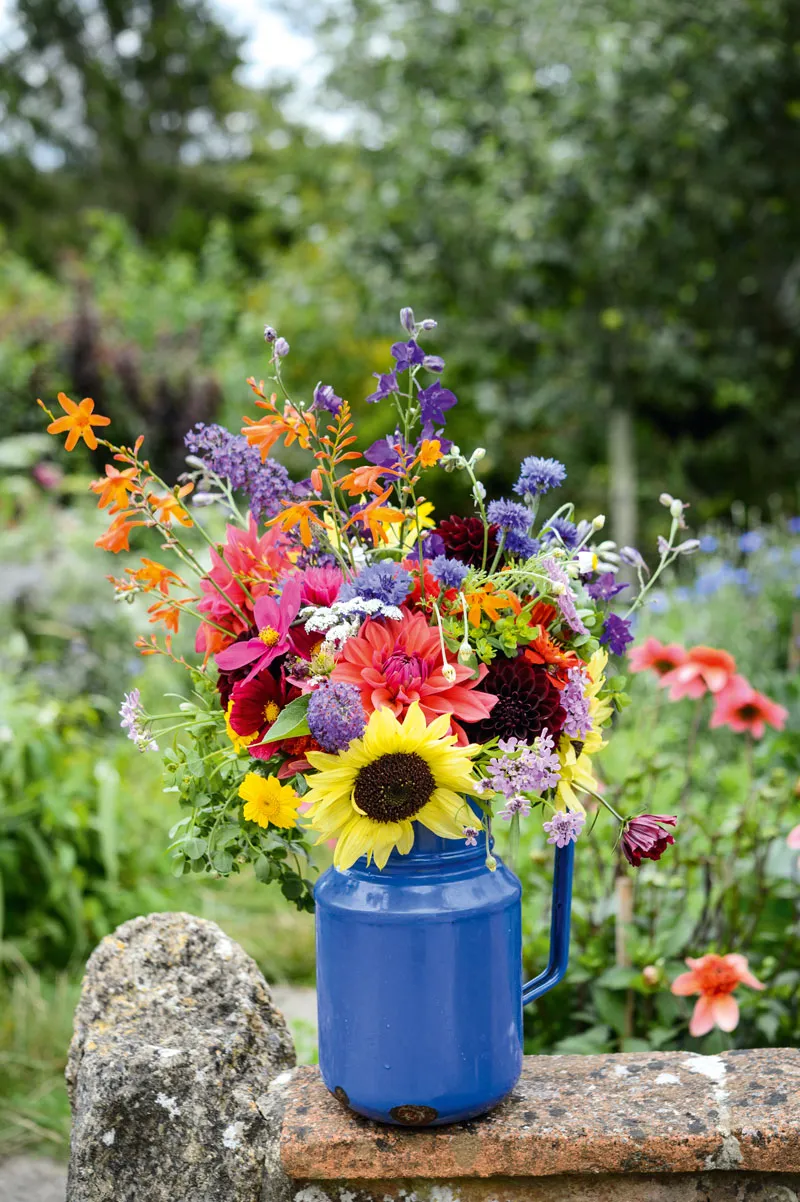
Iford Manor, Wiltshire
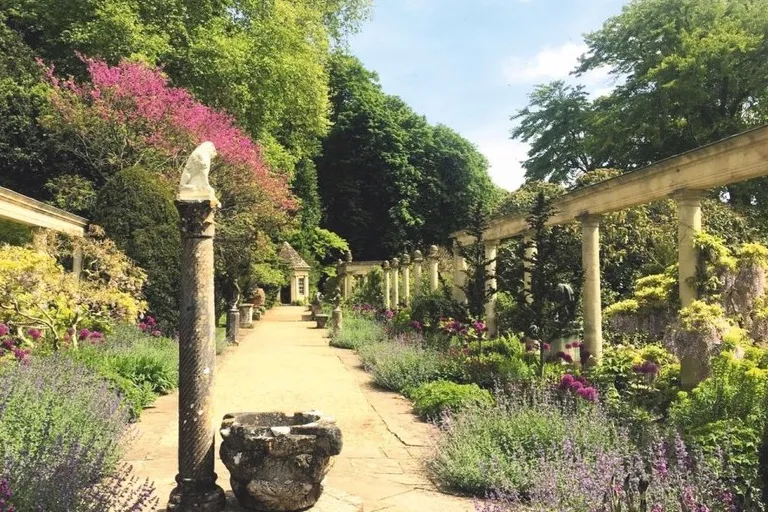
Iford’s Italianate gardens in Wiltshire unite the natural and the managed, creating a charming blend of time-worn sculptures, perfume-scented lilac wisteria and flower-hemmed walkways.
Herterton House Gardens, Northumberland
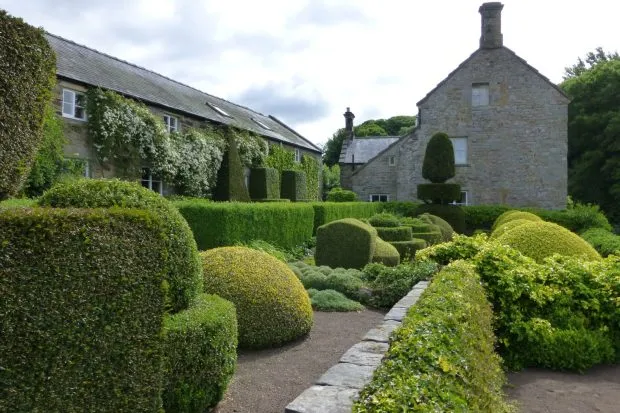
Early summer is the perfect time to experience the intimate artistry of this small but much-acclaimed rural Northumbrian garden, designed around a derelict 16th-century farmyard.
Clumber Park, Nottinghamshire
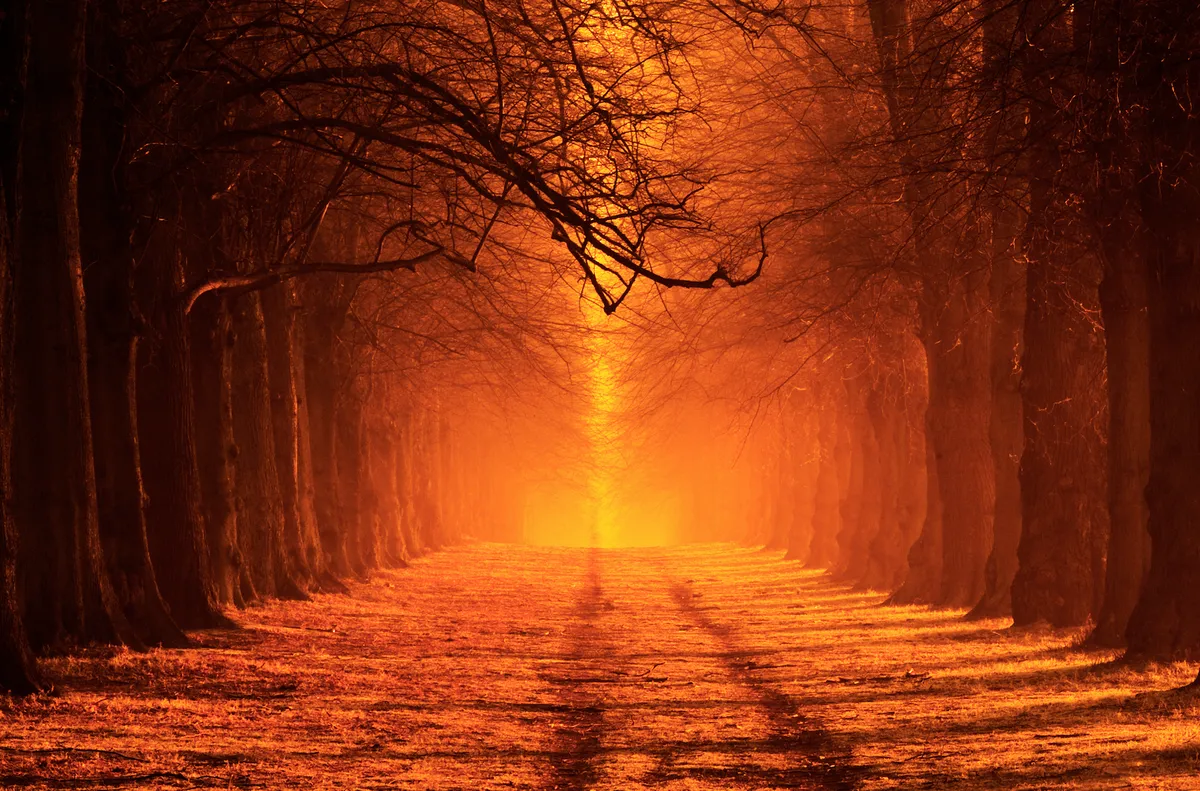
Clumber Park has the longest stretch of working glasshouse of any of the National Trust properties: it is a beautiful thing and is in the process of being painstakingly restored. After you have finished striding purposefully around the gardens and along the two-mile Lime Tree Avenue, drop in on the museum of garden tools where you can marvel at how our ancestors did all that digging with such extraordinarily heavy spades and discover the point of a cucumber straightener.
Pensthorpe Natural Park, Norfolk
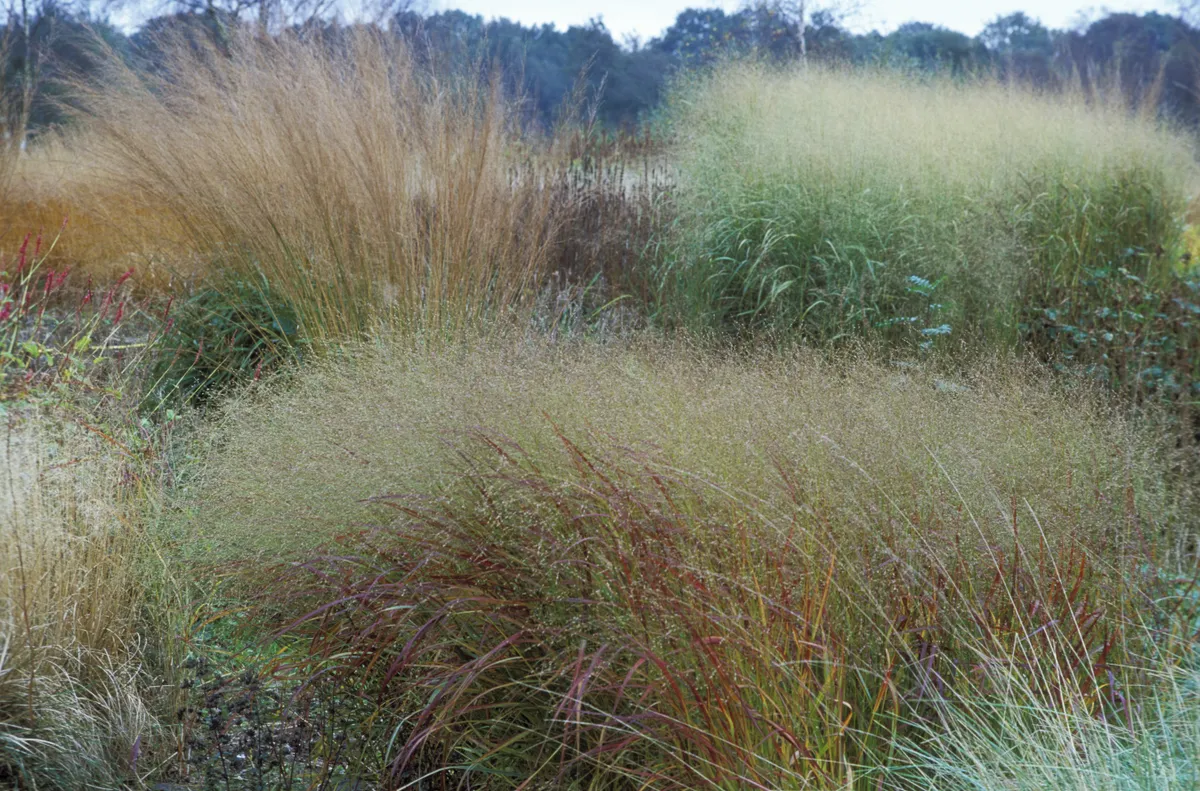
Piet Oudolf is probably the number one garden designer in the world at the moment. Among others, he is responsible for the High Line – a sensational park in New York created on the old elevated railway track. At Pensthorpe Millennium Garden, he has laid out his characteristic swathes of planting: on a frosty morning it will look spectral yet scintillating. The gardens are surrounded by acres of natural wetland landscape and woodland brimming with birds and sundry wildlife.
Painswick Rococo Garden, Gloucestershire
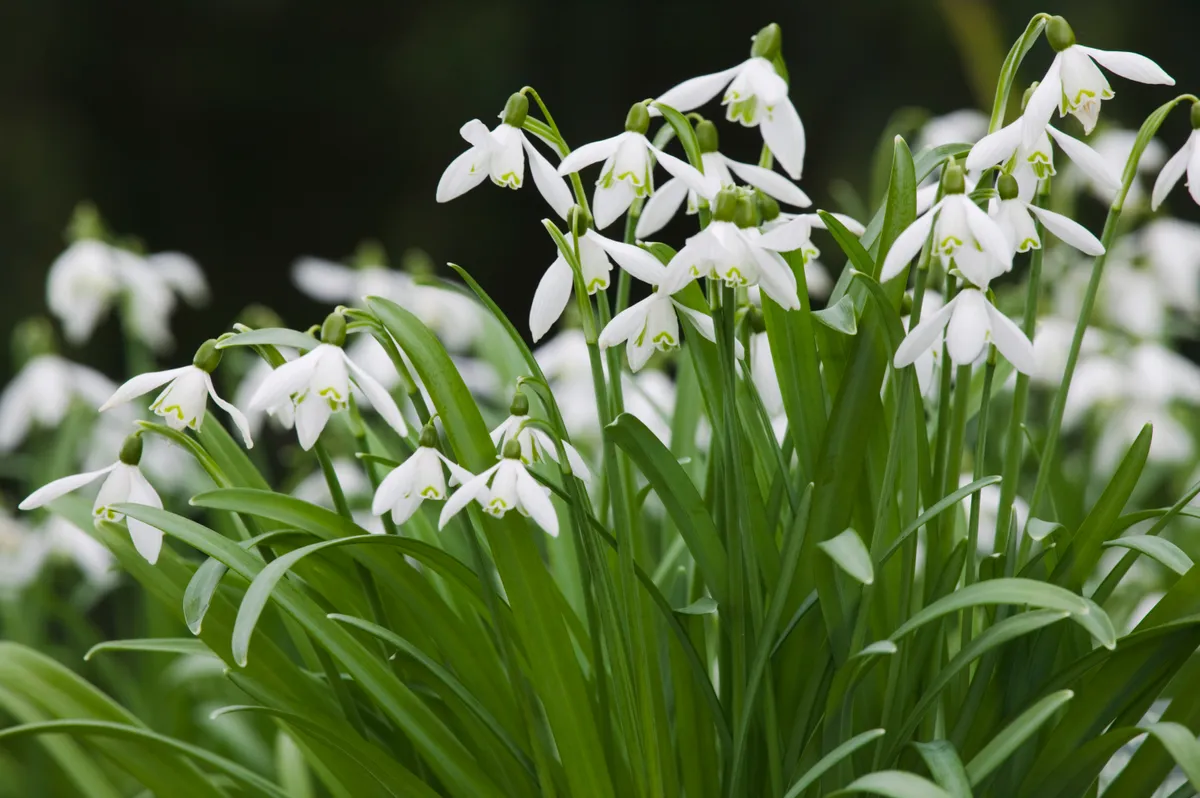
I spent a week here in the summer and loved it – it is the sort of garden that I could imagine owning. Big but not ridiculously so, full of quirks and interesting corners, good fruit and, once you climb out of the valley, some gorgeous views. This was a garden designed almost 300 years ago for parties and it would be a pity to stop now. If you go in January, when the Painswick Rococo Garden reopens, the place will be carpeted with snowdrops.
Fountains Abbey, Yorkshire

If you catch Fountains Abbey in just the right light – maybe with a bit of early morning mist, or possibly as the sun sinks into an early sunset – then it looks not only ethereal but a little bit spooky. The ruined Cistercian abbey (the monks were booted out during the Reformation) is close to the Georgian gardens of Studley Royal, Fountains Hall and the old medieval deer park. Come back next October to sample the apples from the orchard.
Sheringham Park, Norfolk
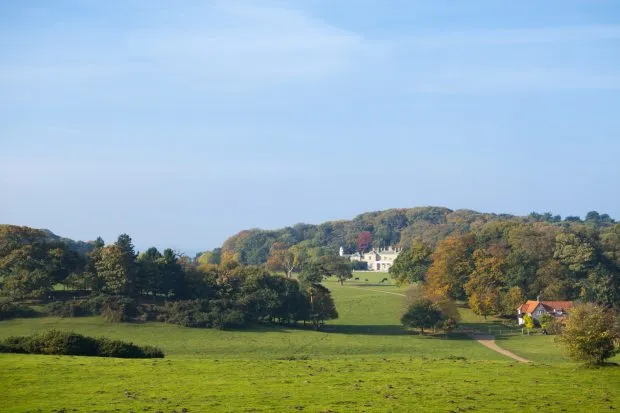
Close to the reputable Humphry Repton’s home in the village of Sustead is Sheringham Park, perhaps the best-preserved example of the Englishman’s work. The gardens include a variety of habitats, such as Bower pond, which bursts into life in summer with azure damselflies and broad-bodied chaser dragonflies.
Bluebells guide
One of the most welcoming signs of spring, make the most of the bluebell season this with our bluebells guide – learn when bluebells flower, how to tell the difference between English and Spanish bluebells and the best places to see.

Antony Woodland Garden, Cornwall
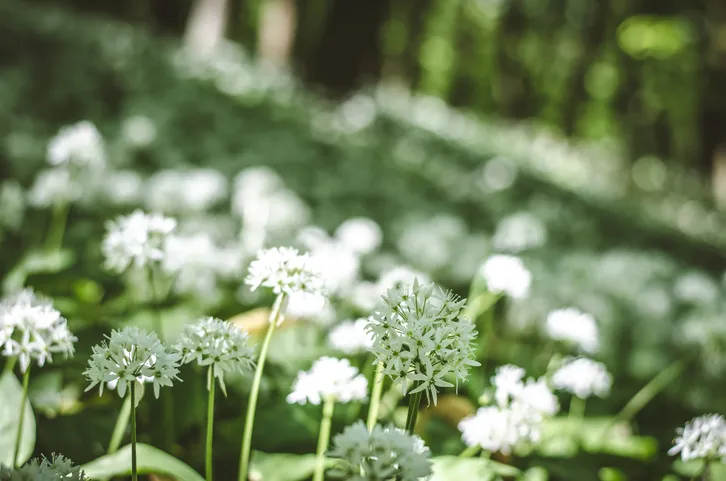
Antony Woodland Garden is split into two areas, the Wilderness and West Down. The former – a wooded slope rolling down to the River Lynher – was designed by Humphry Repton and his friend Reginald Pole-Carew.
Attingham Park, Shropshire
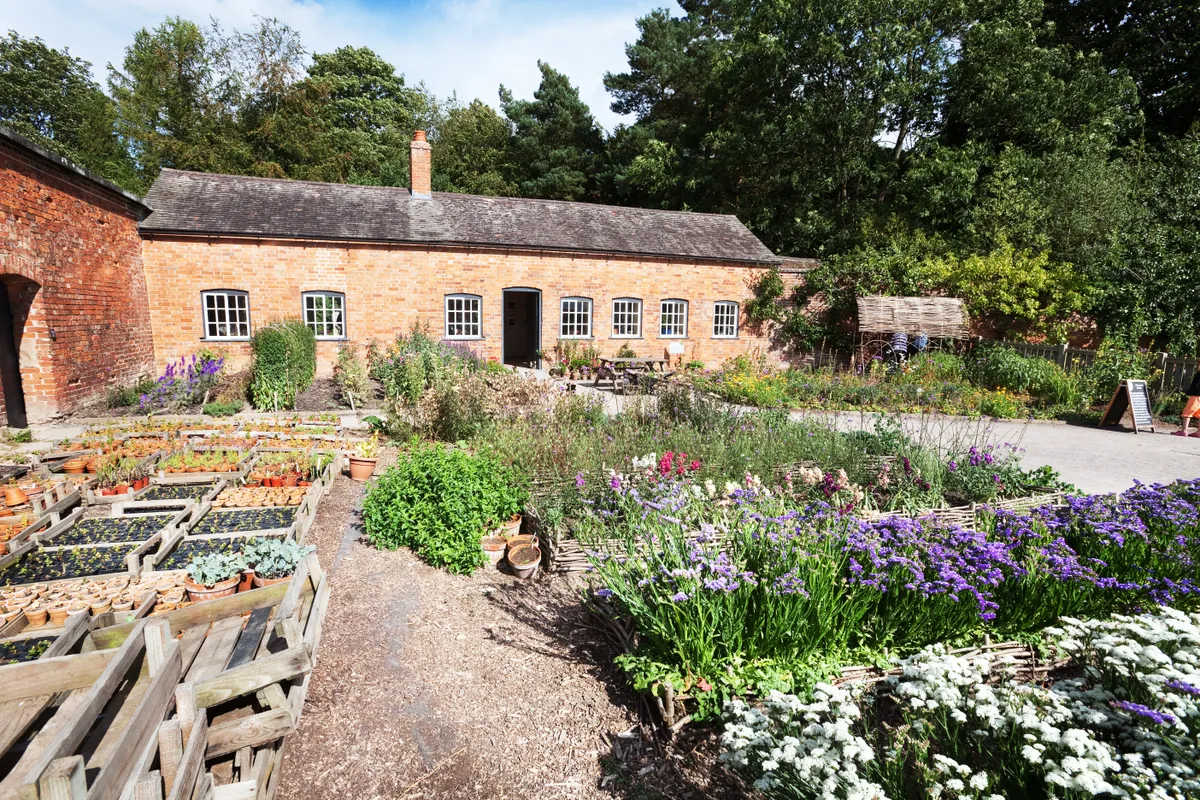
A circular trail through Attingham Park, nicknamed the ‘Repton Ramble’, offers visitors a flavour of the harmonious landscapes that the designer envisaged for the 18th-century mansion and estate. The loop includes a stop at The Repton Oak, a tree planted by Humphry Repton himself.
Woburn Abbey, Bedfordshire
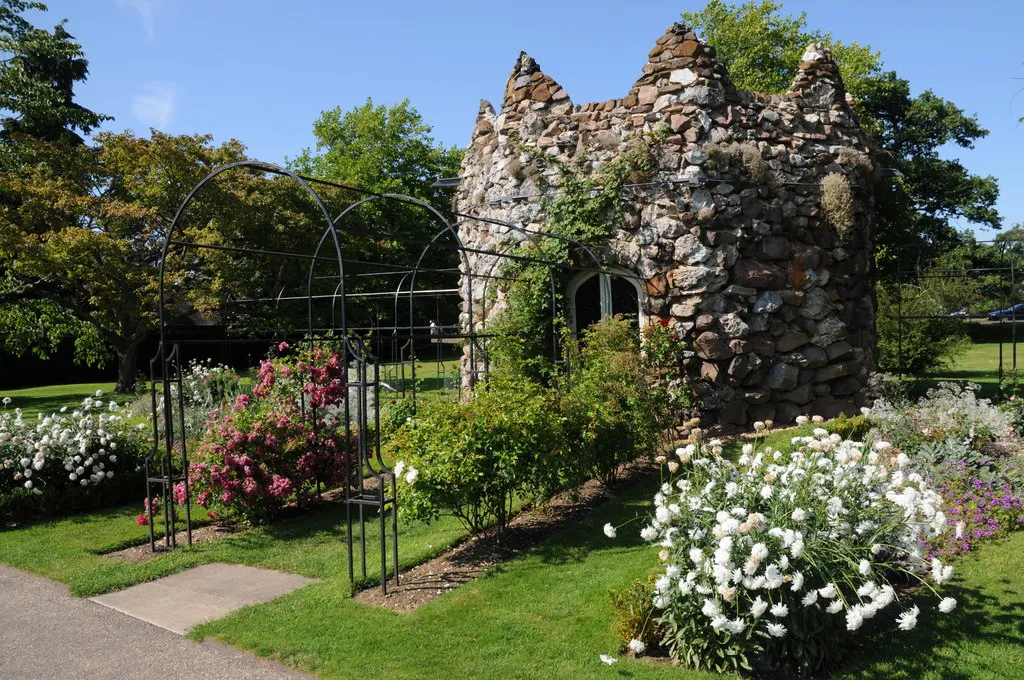
Open to the public since 1955, the gardens at Woburn Abbey are a great place to go for day out in the sun. A particular highlight is the reconstructed Cone House, originally designed as a platform from which the Duke of Bedford, his family and their guests could safely watch the wild animals of their menagerie.
Hatchlands Park, Surrey

National Trust gardeners deserve great credit for their efforts at Hatchlings Park, most recently with the planting of oaks, sweet chestnuts, limes and hornbeams. The gardens were partly landscaped by the famous designer Humphry Repton.
Tatton Park, Cheshire
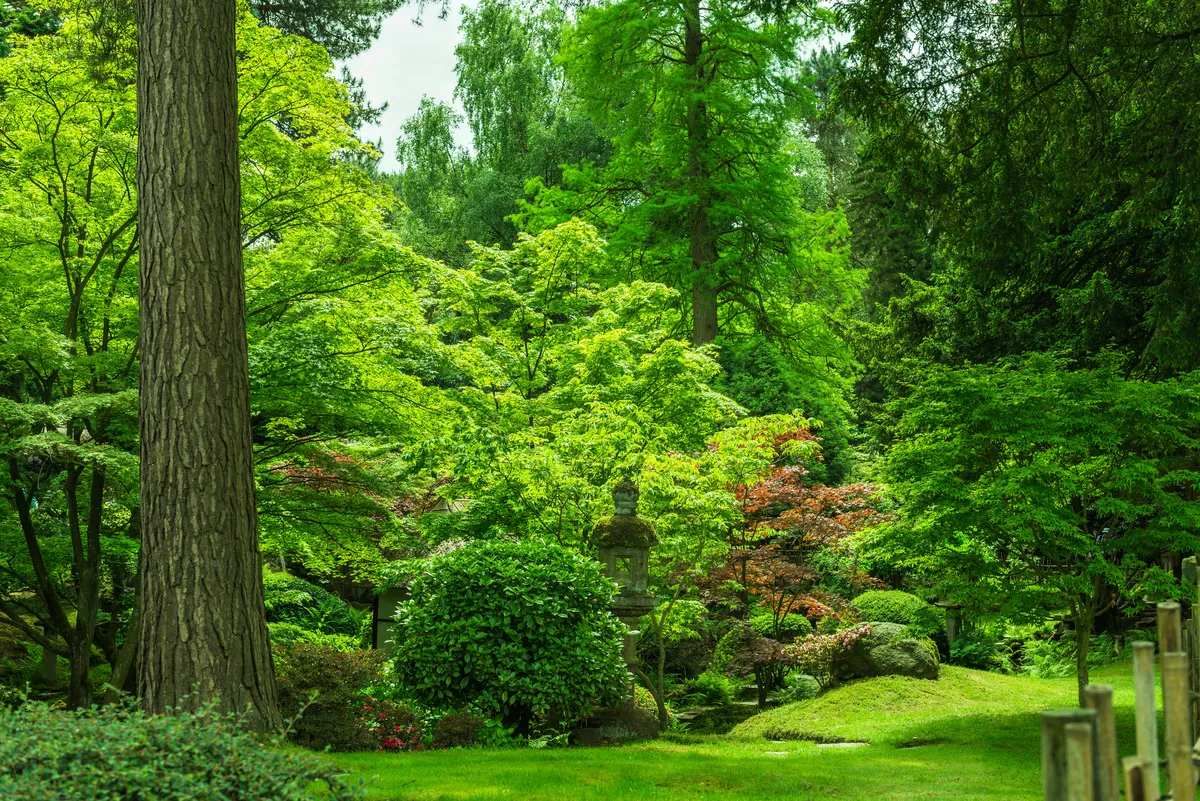
The appearance of Tatton Park owes itself to the work of Humphry Repton. A stroll through the park’s beech-lined avenues is well worth it and, in June, you can take part in a Repton-themed cycle ride.
Uppark House and Garden, West Sussex
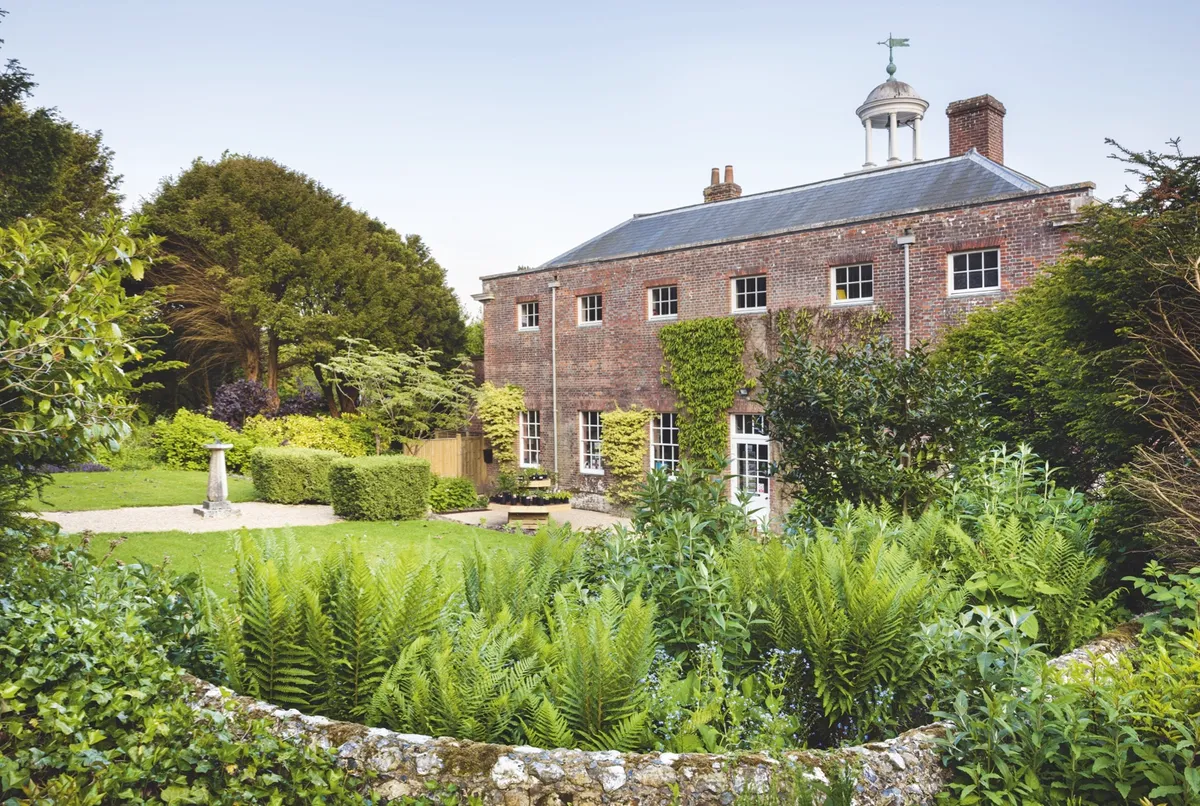
Uppark House was graced by the hands of both Repton and ‘Capability’ Brown. In the summer months, the café sets up tables and chairs on the grass with views out over the South Downs National Park.
Wales
Dyffryn Fernant Garden, Pembrokeshire
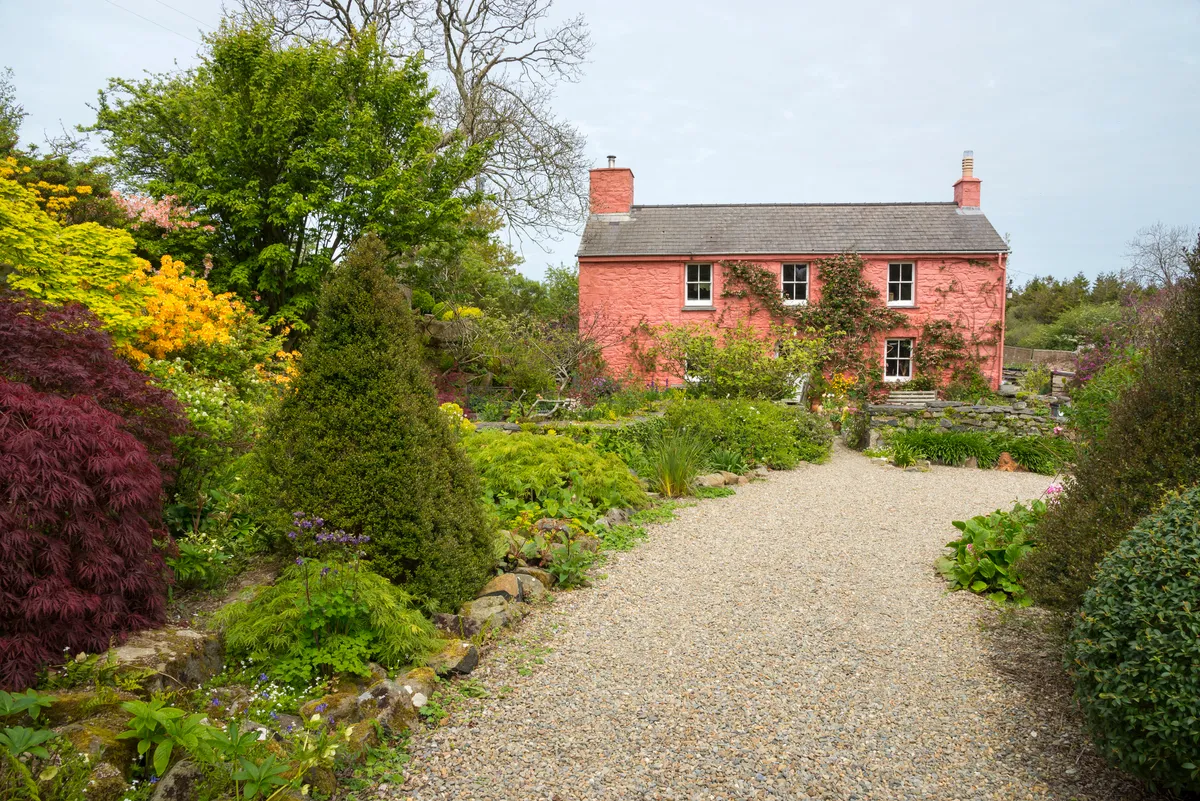
Rocks stipple the blackened slopes of Mynydd Dinas, a high point of the Preseli Hills, surrounded by gorse, rough pasture, stone walls and the teal waters of St George’s Channel. This is a place of megalithic significance, huddled between the deep Gwaun Valley and the coast; a place where, to the song of a stream, a sinuous lane rises, ducks beneath ash trees, twists between hedges and delivers you to Dyffryn Fernant.
The garden belongs to this landscape. It’s a conversation with the rocks, the tussocky bog and the blue clay from which it has been coaxed. Bold exotics are accommodated among natives that creep and drift in by rhizome and seed.
Powis Castle and Garden, Powys
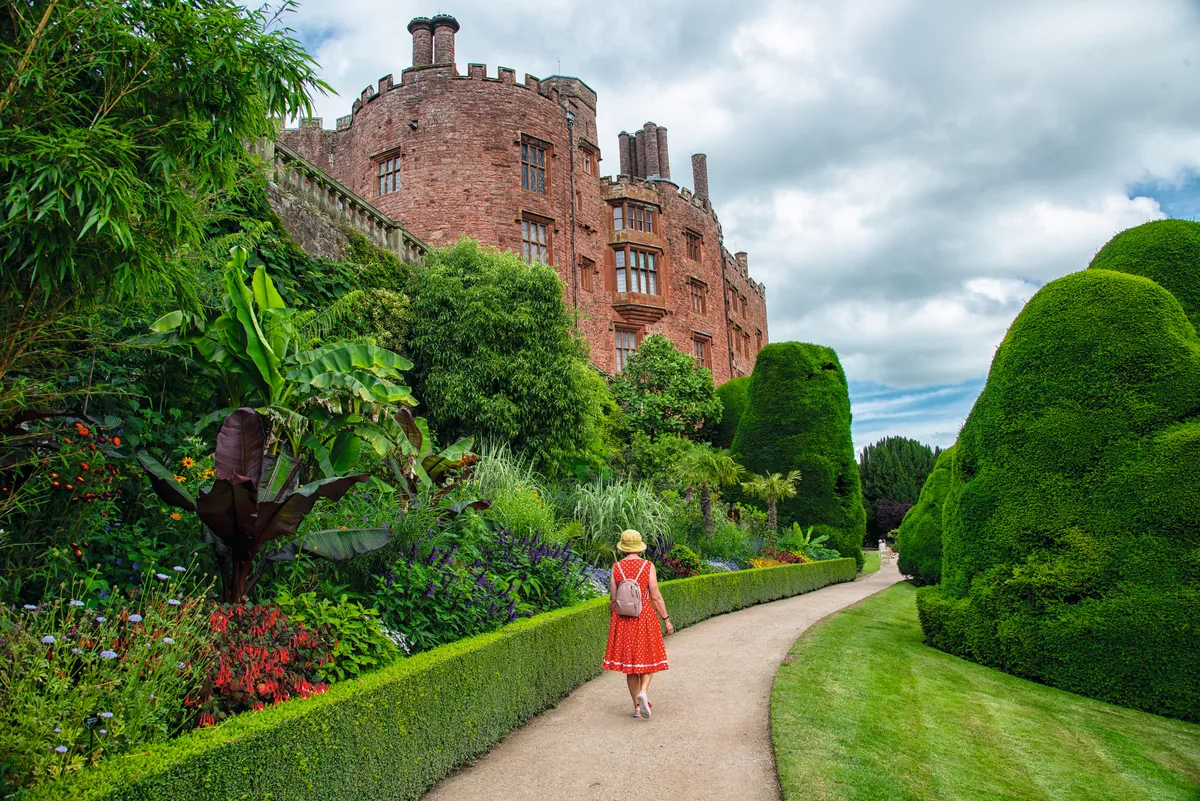
Sun-warmed bricks coax heady scents from the roses at Powis Castle and Garden. Peacocks wail. Apples blush. It’s a feast for all the senses when this south-facing garden is at its best in late summer.
It’s the time when acers begin their slow burn and the smoke bush smoulders. When dahlias, rudbeckias, katsuras, colchicums and penstemons roll out spice-market colours that are richer and warmer even than the sandstone cliff from which the garden has been encouraged.
Bodnant Garden, Conwy
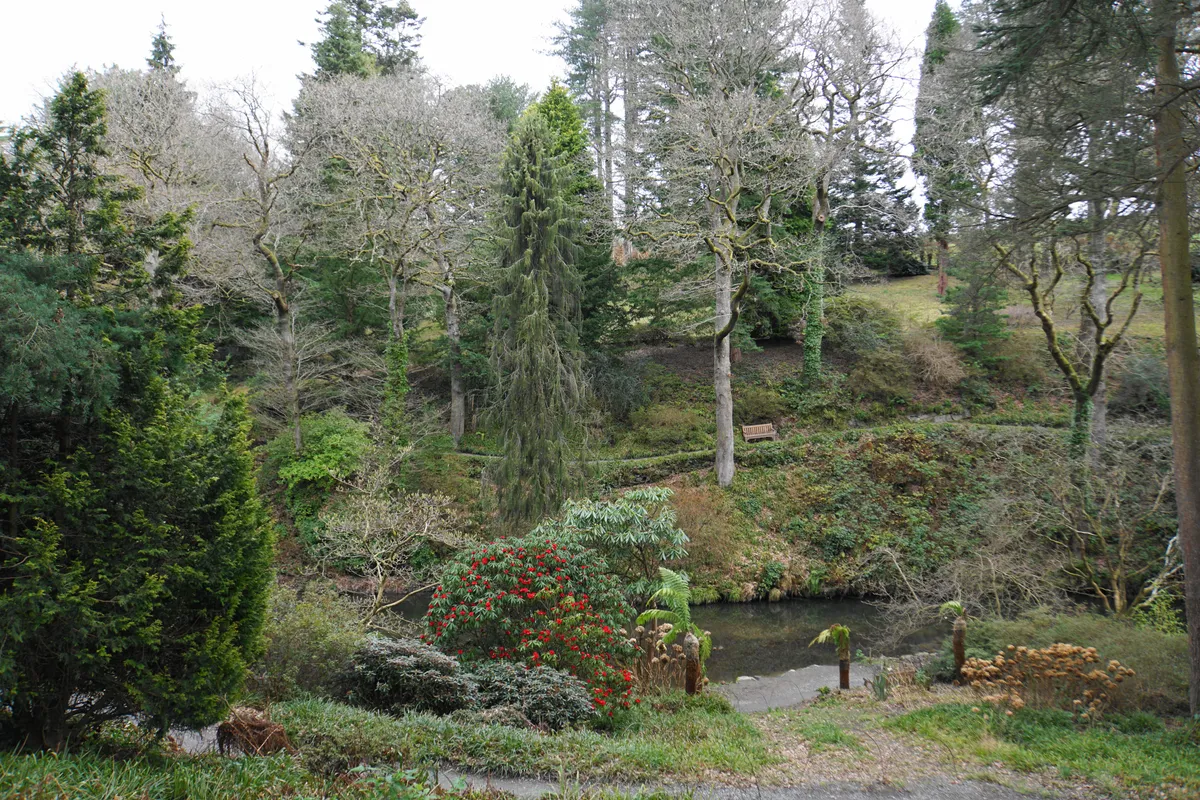
With sprightly views of the River Conwy and the distant prospect of Snowdonia, Bodnant Garden is one of the great gardens of Wales. The 80 acres offer both a more formal area up by the house and a wild garden further down the hill, towards the river. There are plants growing here from all over the world, collected by five generations of the Aberconway family. And perched above the river Hiraethlyn, there is a building called The Poem, which has to be a good thing.
Bodnant becomes a firework display of crimson, amber and gold in autumn, as the glowing leaves of trees and shrubs, ripening fruit and berries and late flowering plants put on a show to rival the brightest colours of summer. The garden is home to trees from around the world including many UK Champion Trees - the biggest and best of their kind in Britain. Rare exotic shrubs collected by plant hunters a century ago have a variety of unusual fruits and flowerheads – such as the blue seed pods of Decaisnea fargesii (Dead Man’s Fingers)
Cleverly designed to allow water beneath it, people across it and eels through it, the Waterfall Bridge forms a dam between Bodnant’s lake and the rhododendron-lined Afon Hiraethlyn. This Snowdonia garden also includes grand lawns, colourful terraces, wildflower meadows and enormous trees. The Secret Garden was filmed here – and it's easy to see why.
Dyffryn Gardens, Cardiff
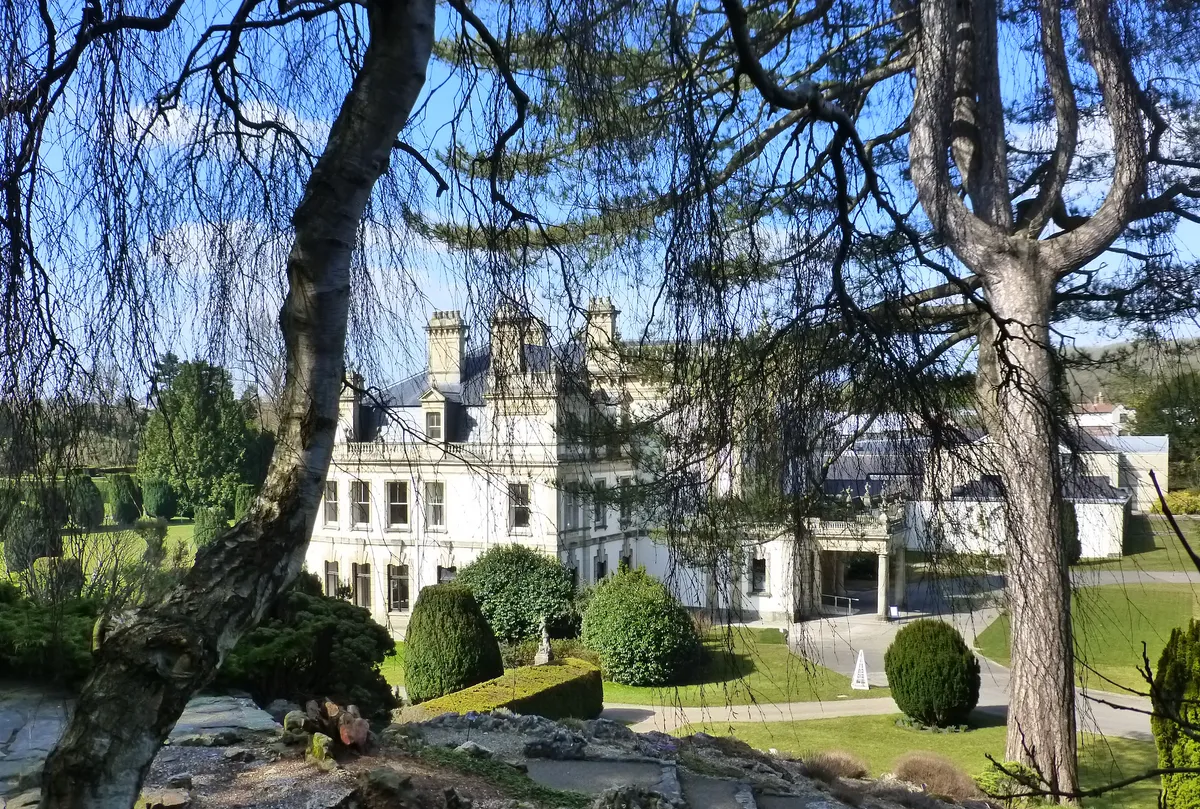
Even as winter sweeps across this Edwardian garden, there are signs of life and colour at Dyffryn Gardens. Head to the arboretum and see shimmering red barks, ruby holly berries and dazzling winter roses.
Snowdrop swiftly follow suit, popping up in the woodlands and among the wonderful water features. If this is all a bit too chilly for you, step inside the glasshouse for a taste of the warmer months to come.
Penrhyn Castle, Gwynedd
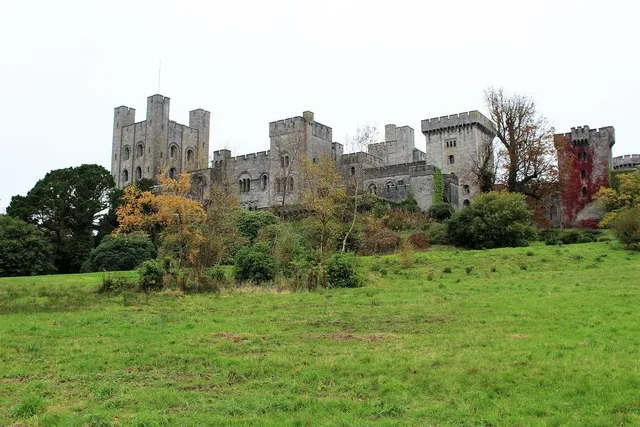
Even in the midst of winter, there's still plenty to see and do at Penrhyn Castle. Enjoy far-reaching views from Maple Lawn across the dramatic North Wales coast and look out for winter flowers on the woodland trails.
Scotland
Crathes Castle Garden, Aberdeenshire

Home to the Burnett family for 400 years until gifted to the National Trust for Scotland in 1952, successive baronets changed the Crathes Castle Garden but retained some features, creating an eclectic mix of styles from the 18th century to the present.
The spectacular 1.6-hectare walled garden, adjacent to the castle, is divided into eight areas, notable for their colour themes and rare plants. Much of the planting was the work of plant collector Sir James Burnett and his wife Lady Sybil, a talented designer who transformed the kitchen garden into an ornamental garden in the 1920s.
The upper walled garden boasts ancient topiary, including the iconic ‘egg and egg cups’, a croquet lawn and the Pool Garden. Below is the Fountain Garden and the soon-to-be replanted rose garden. The most recent addition, an Evolution Garden, was created by head gardener James Hannaford.
Greenbank Garden, Glasgow
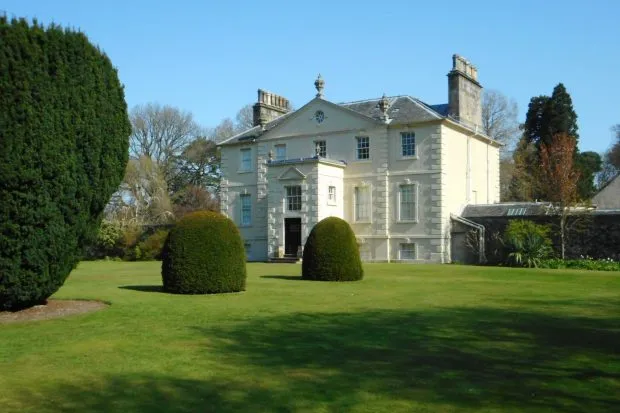
Less than six miles from Glasgow city centre and set in the grounds of a Grade A-listed Georgian House is Greenbank Garden, a tranquil oasis featuring a large walled garden and 6.5-hectare woodland.
Greenbank was built in the 1760s for Robert Allason, a merchant in the tobacco and slave trades. Over the next two centuries, the house changed hands several times until it was bought in 1962 by William Blyth who, with his wife, transformed the walled garden into the ornamental gardens seen today.
Cambo Gardens, Fife
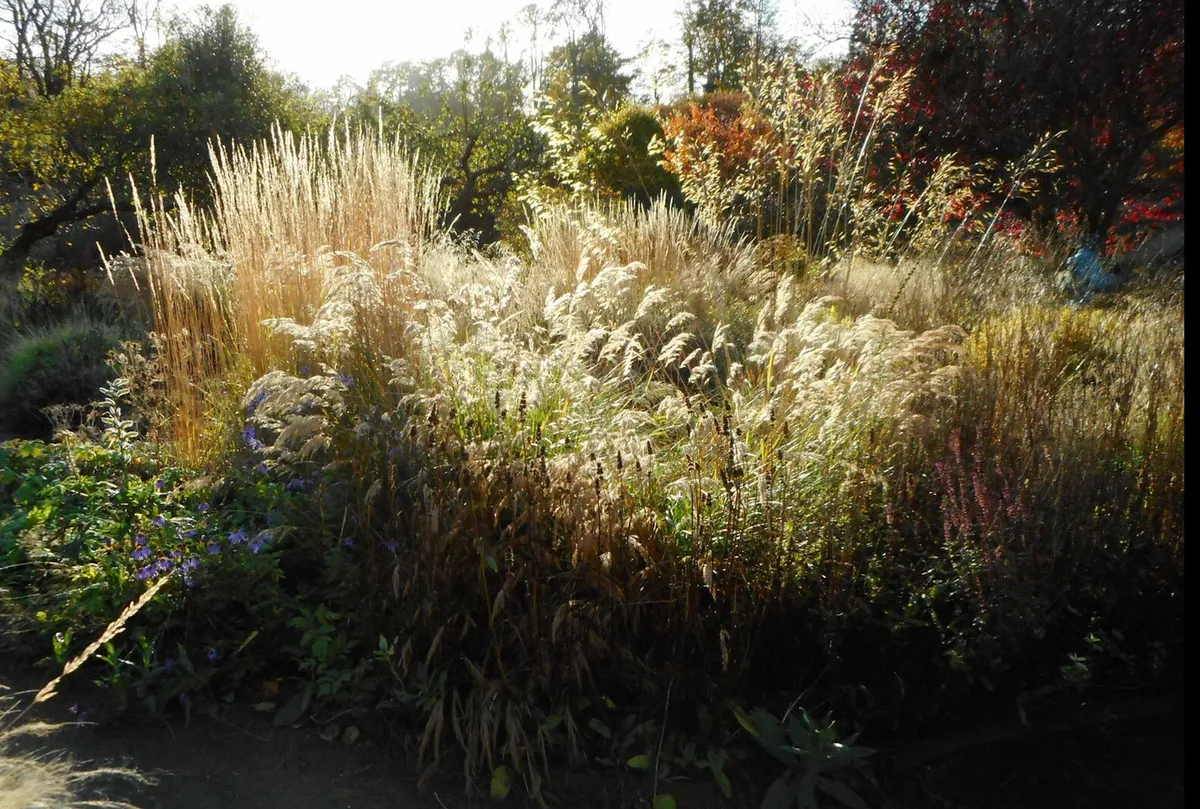
Cambo Gardens has beautiful walks through the woodlands of oak, sycamore and ash, which take you along the burn to the sea, and are open every single day of the year. But if you want a special treat, then go when the snowdrops are flowering. In winter, the first emerge to greet you and before long, great swathes of nodding white flowers carpet the woodland floor. Just the thing to shake off the new year blues and set you on a course towards spring.
Dunskey Gardens, Dumfries and Galloway
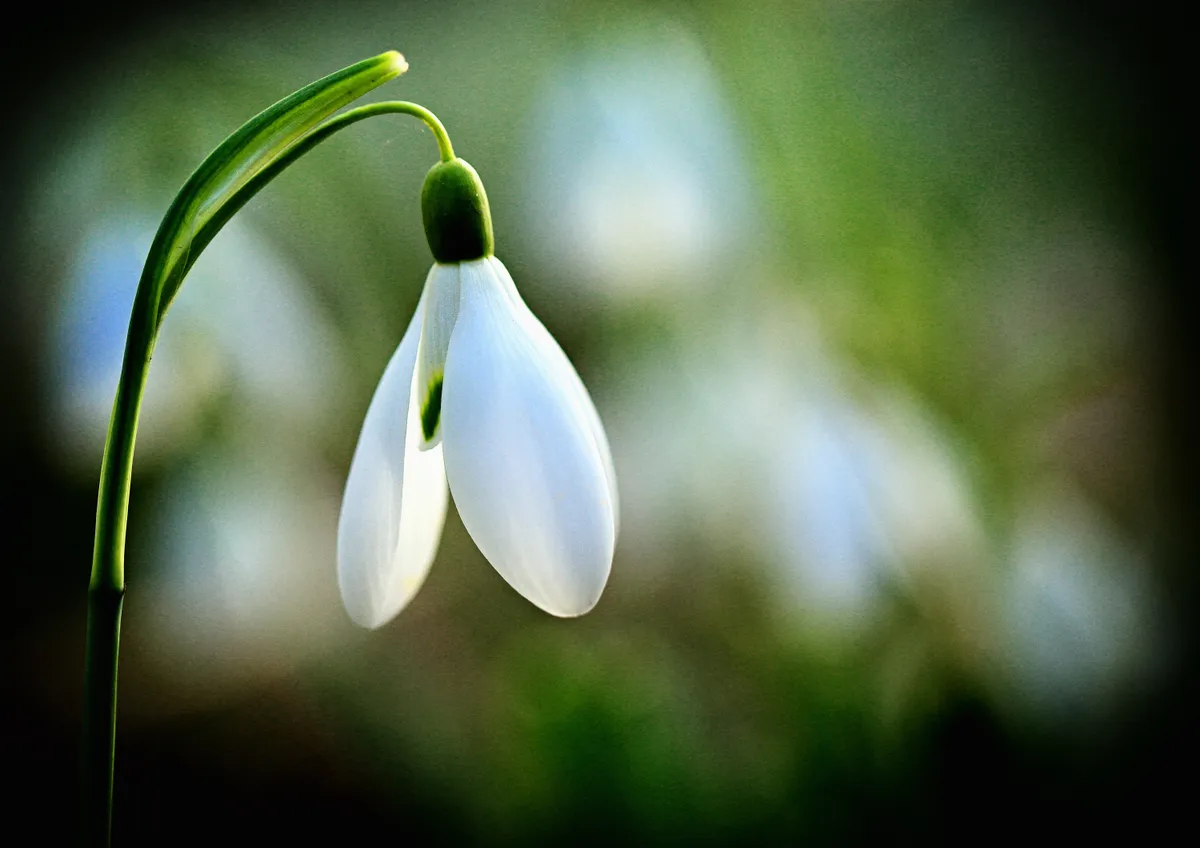
Head to the pretty harbourside village of Portpatrick and to Dunskey Gardens (open by appointment), which holds collections of exotic flowering shrubs such as Clianthus and Sutherlandia. Snowdrops emerge in late winter – much to the delight of the kids.
Crarae Garden, Argyll, Scotland
This spectacular 50-acre woodland garden consists of a collection of woody plants centred on the Crarae Burn, which tumbles through a rocky gorge. It hosts a wide variety of shrubs and trees, with autumn colourings, which grow in the shelter of towering conifers. The garden hosts an amazingly varied collection of trees, some champions of their species, and a National Collection of southern beech. The lush, naturalistic planting and rushing water gives the feel of a Himalayan valley.
gardens-of-argyll.co.uk/gardens/crarae-garden.html
Royal Botanic Garden, Edinburgh
The Royal Botanic garden’s foliage bursts into vivid hues of golds, reds and oranges in autumn, while autumn flowering bulbs enjoy the cooler weather and provide a superb display of shades of pink. A walk through the arboretum is a must as rowans and whitebeams combine brightly coloured fruits with attractive leaves. Deciduous conifers also add to the colour –best known are the larches, which become a mellow gold before the needles drop.
Glenwhan Gardens, Dumfries and Galloway
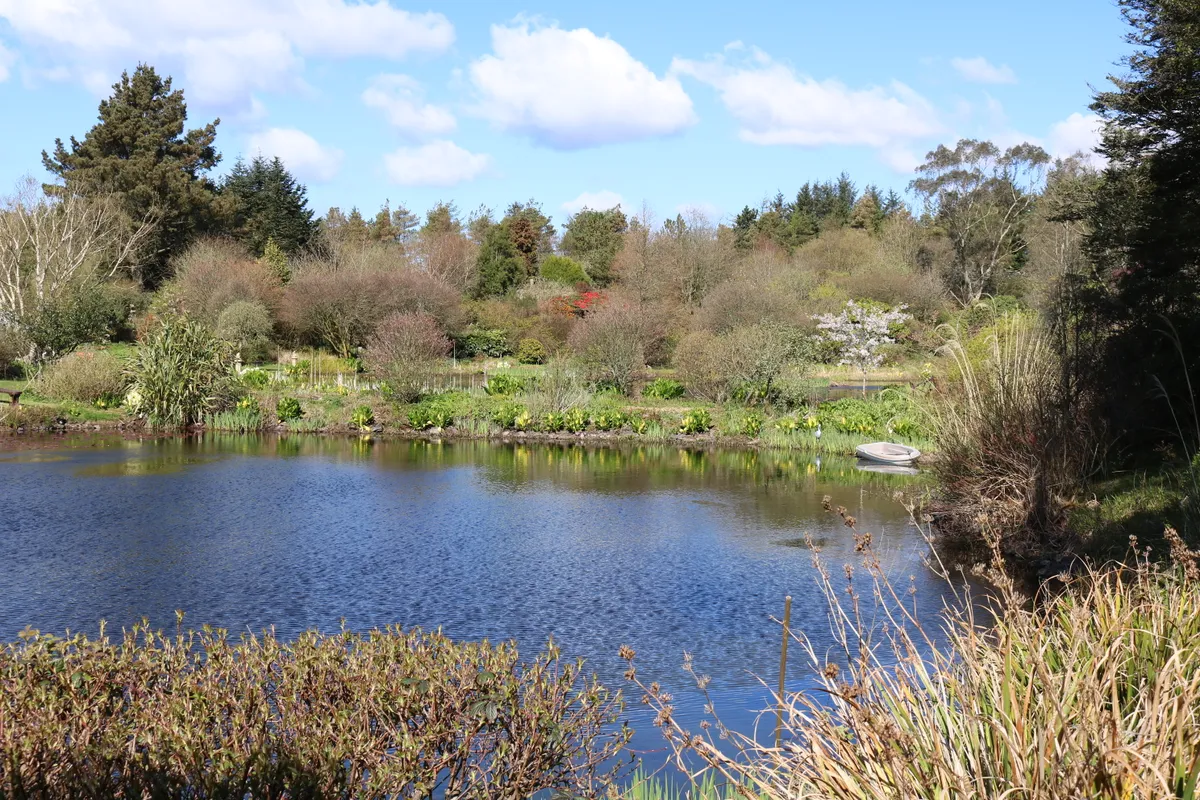
Established just 40 years ago, Glenwhan Gardens are an unexpected gem, created from a bracken-clad hillside 300 feet above sea level with stunning views out over Luce Bay. Azaleas, primulas and camellias all flourish, as do magnolias in spring and a profusion of buddleia in autumn, attracting a mass of peacock butterflies.
During autumn and winter, the gardens operate an honesty box, allowing visitors to pop in and see the winter foliage.
David Welch Winter Gardens, Aberdeenshire
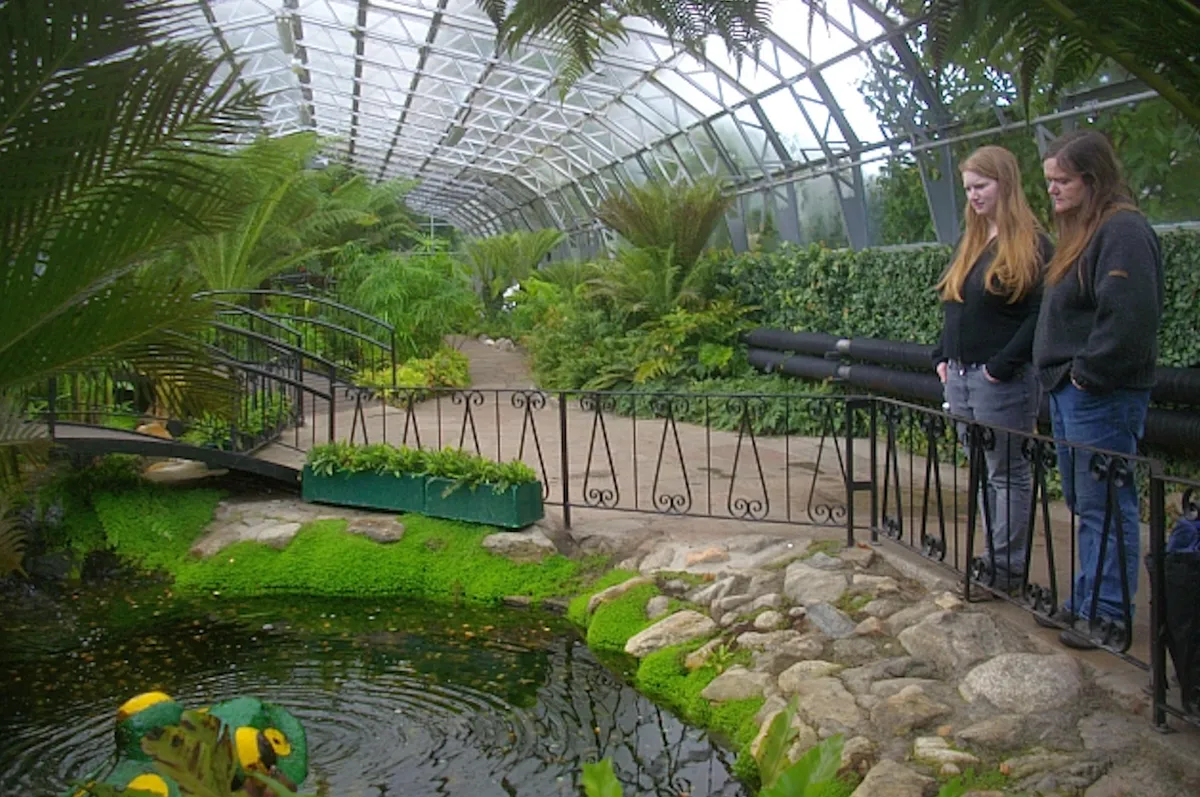
Discover an exotic world in the heart of Scotland at the David Welch Winter Gardens. One of the largest indoor gardens in Europe, the Winter Gardens here include the Temperate House, Corridor of Perfumes, Fern House, Victorian Corridor, Japanese Garden, Tropical House and Arid House.
Scotland’s Garden Route, Galloway
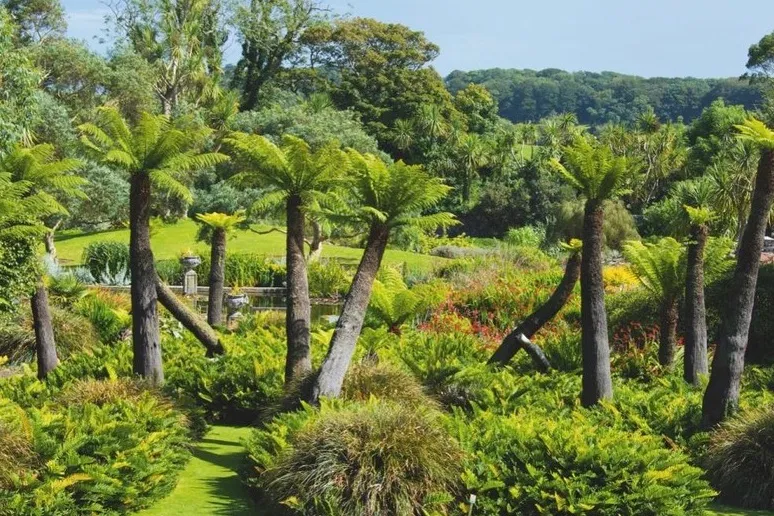
The Rhins of Galloway in south-west Scotland is home to some of Britain's most spectacular county gardens – discover six of the best with Scotland's Garden Route.
Northern Ireland
Rowallane Garden, County Down

Grown from Victorian beginnings, Rowallane Garden is a mixture of formal and informal spaces, giving way to scenic vistas and a variety of plant and animal life, best experienced with leisurely strolls, wildlife watching and afternoon tea.
In the colder months, enjoy the Winter Walk, looking out for holly in the Rock Garden and squirrels in the Woodland.
Castle Ward, County Down
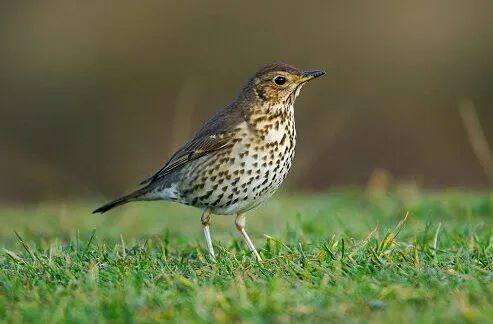
Step out on to some of Castle Ward's 34km of trails, spotting early signs of spring among the winter foliage. Carpets of snowdrops arrive in January on Laurel Walk and mistle thrushes can be heard as they mark their territory for the nesting season.
Mount Stewart, County Down, Northern Ireland

Voted one of the top ten gardens in the world, Mount Stewart reflects a rich tapestry of design and planting artistry bearing the hallmark of its creator – Edith, Lady Londonderry. There are walks for everyone from a short stroll around the gardens to longer walks around the lake and woodlands, including a red squirrel trail. The lake is particularly beautiful in autumn with gorgeous red and gold foliage.
